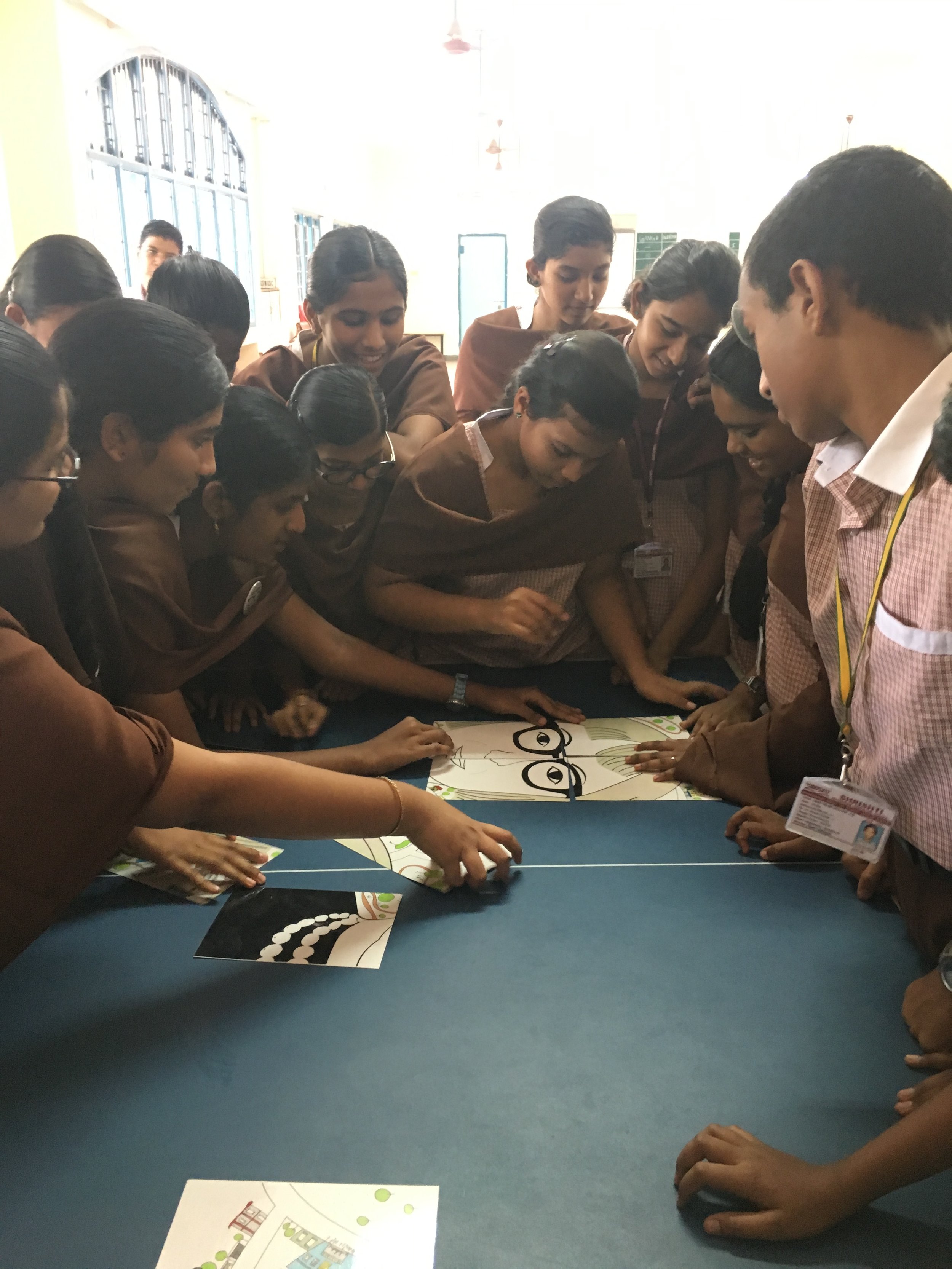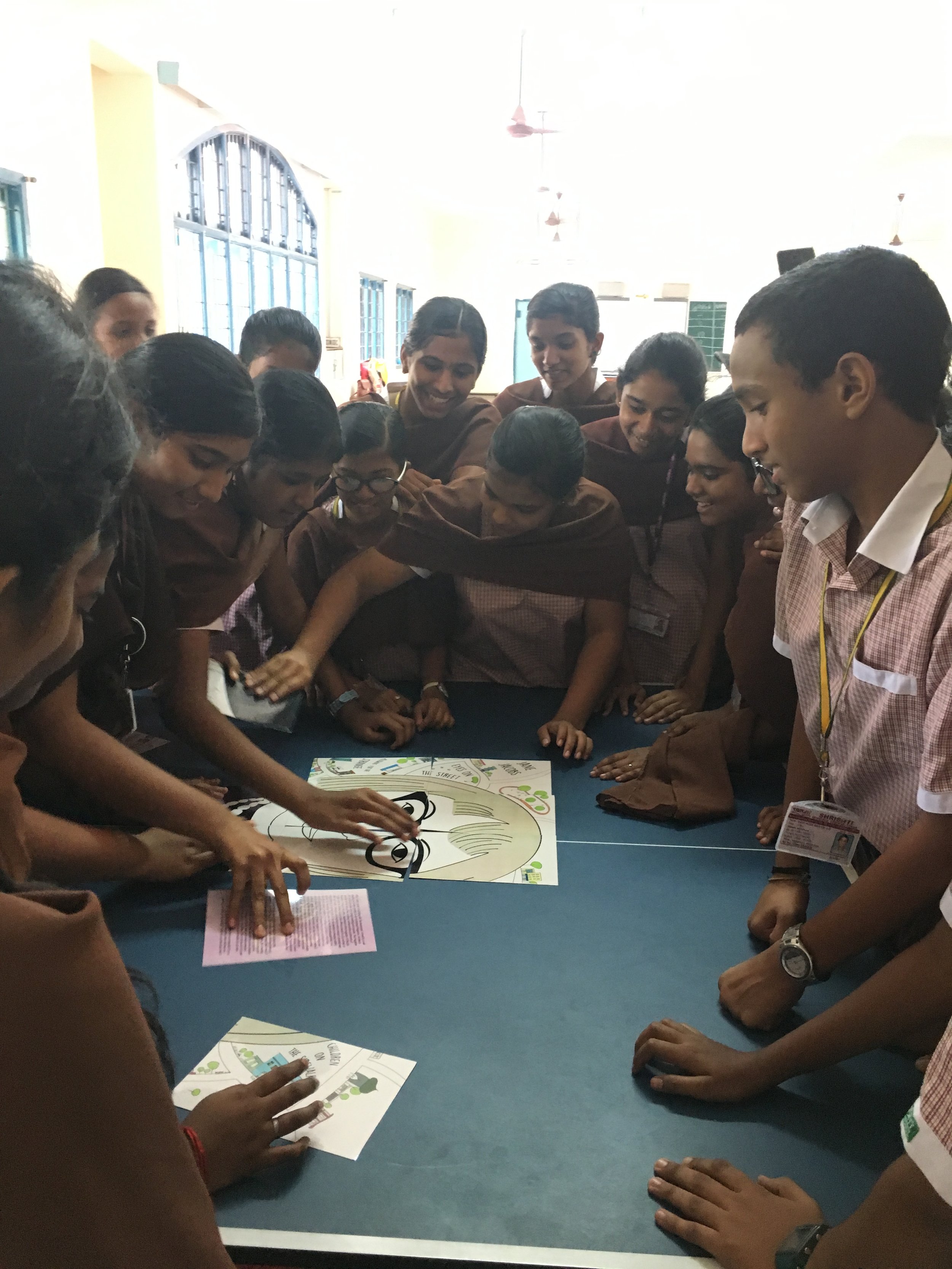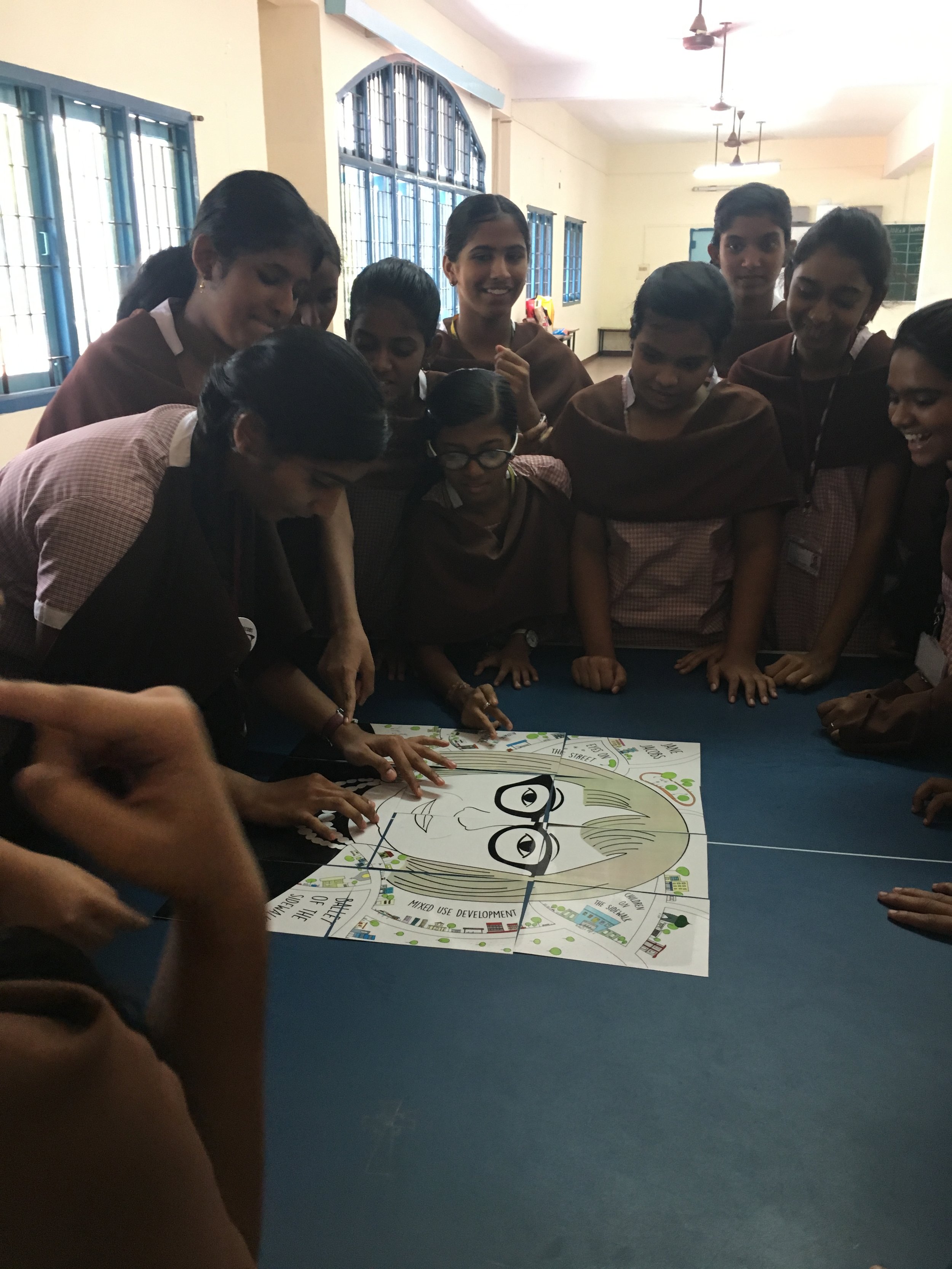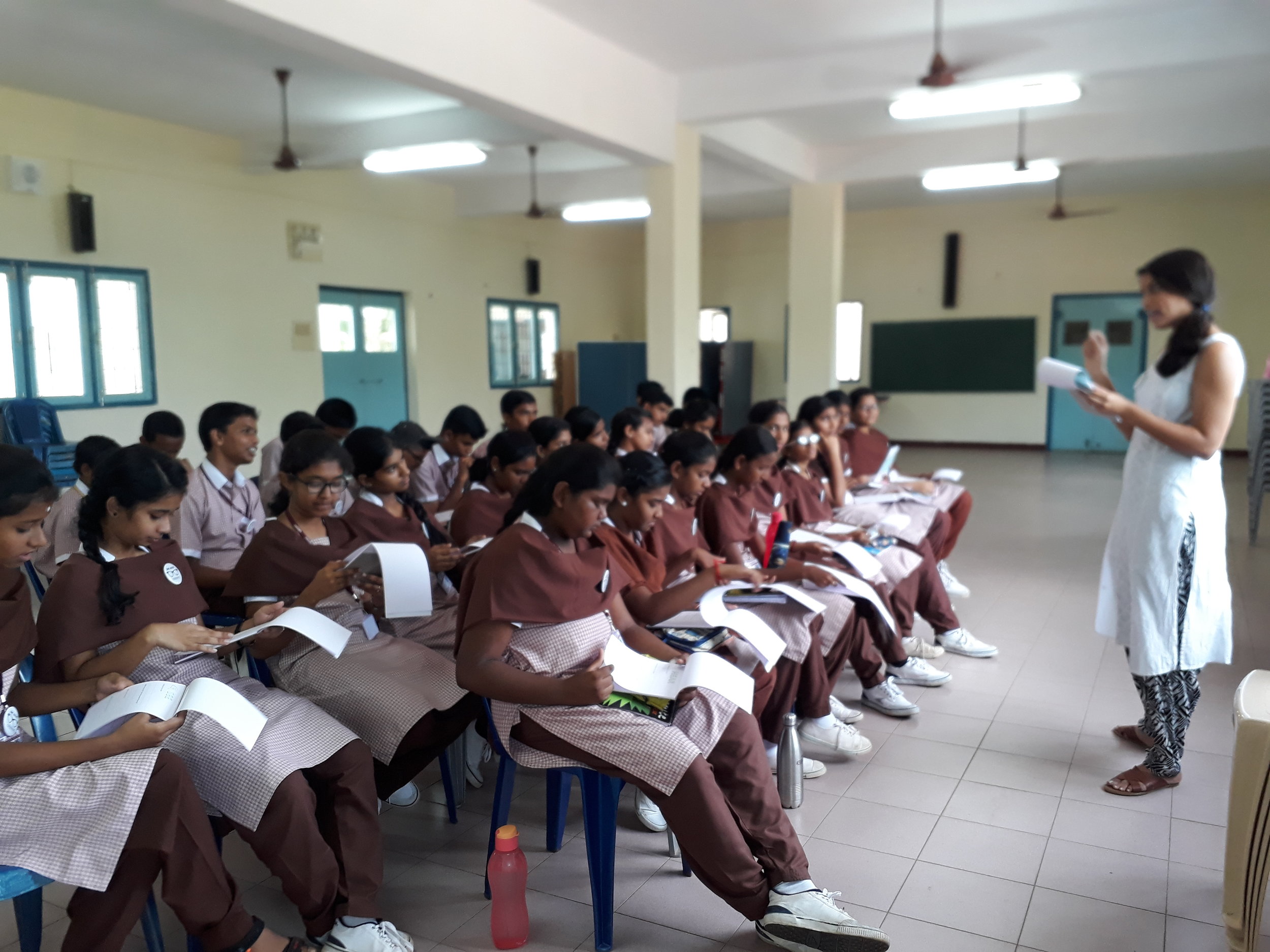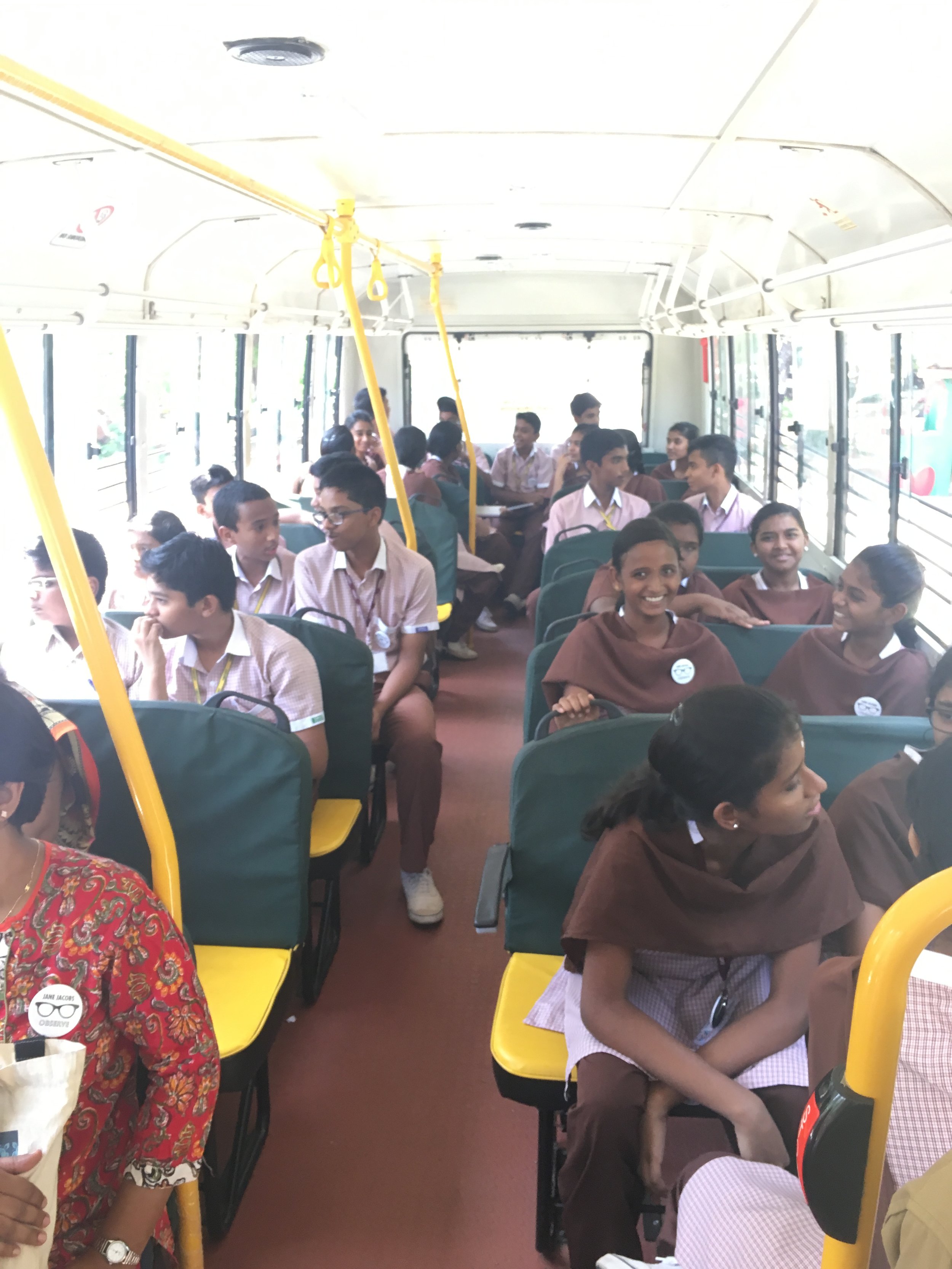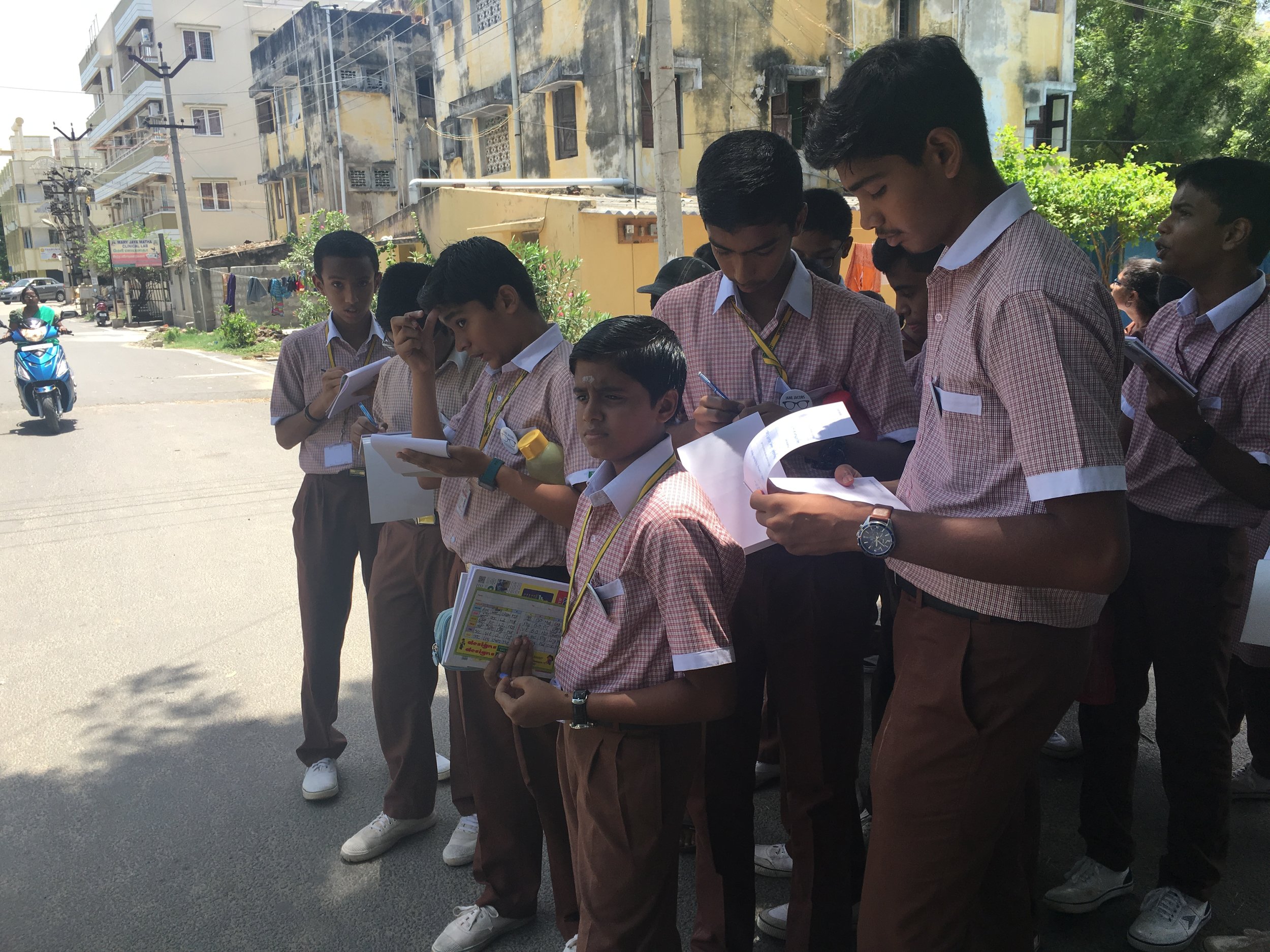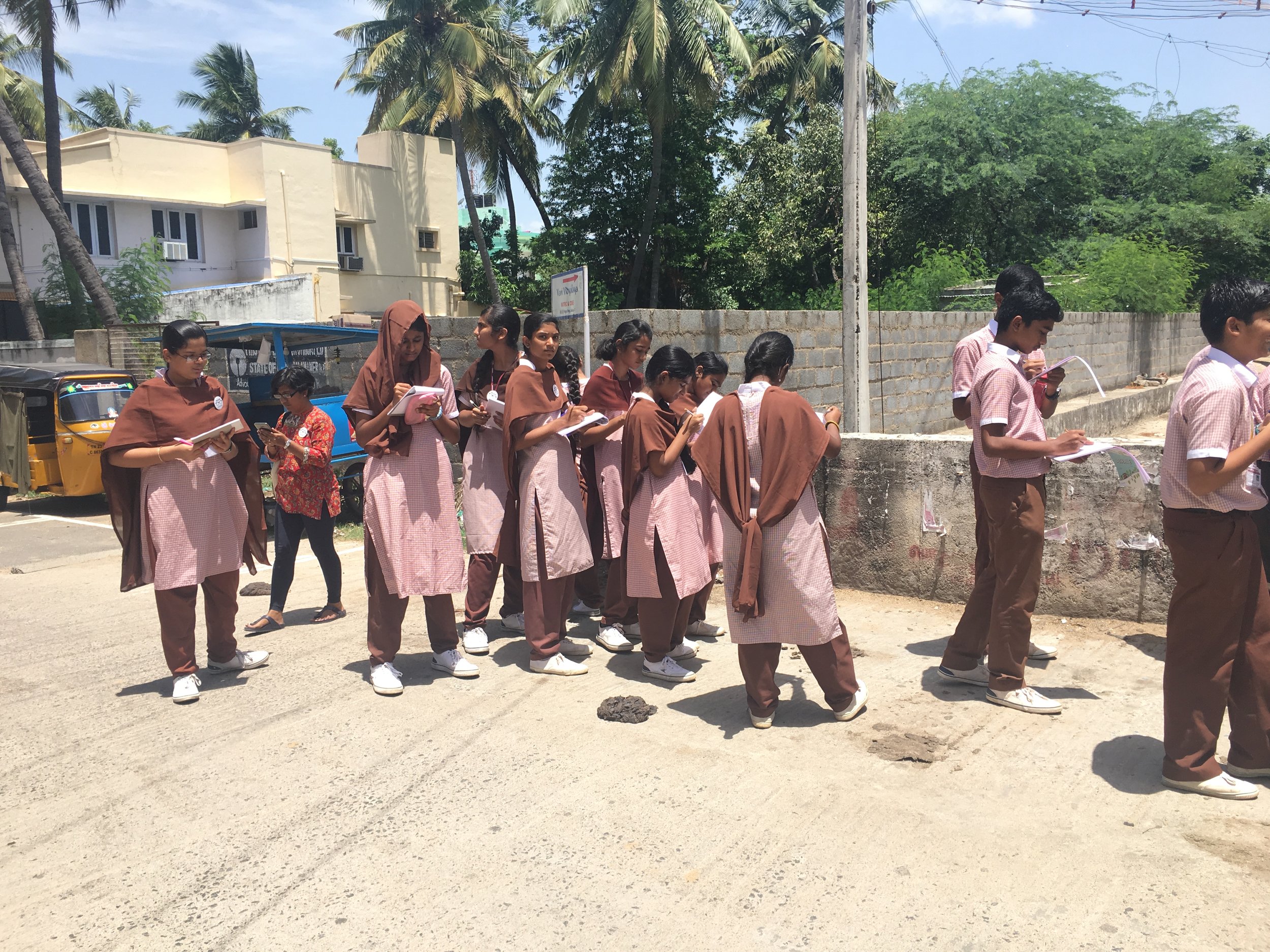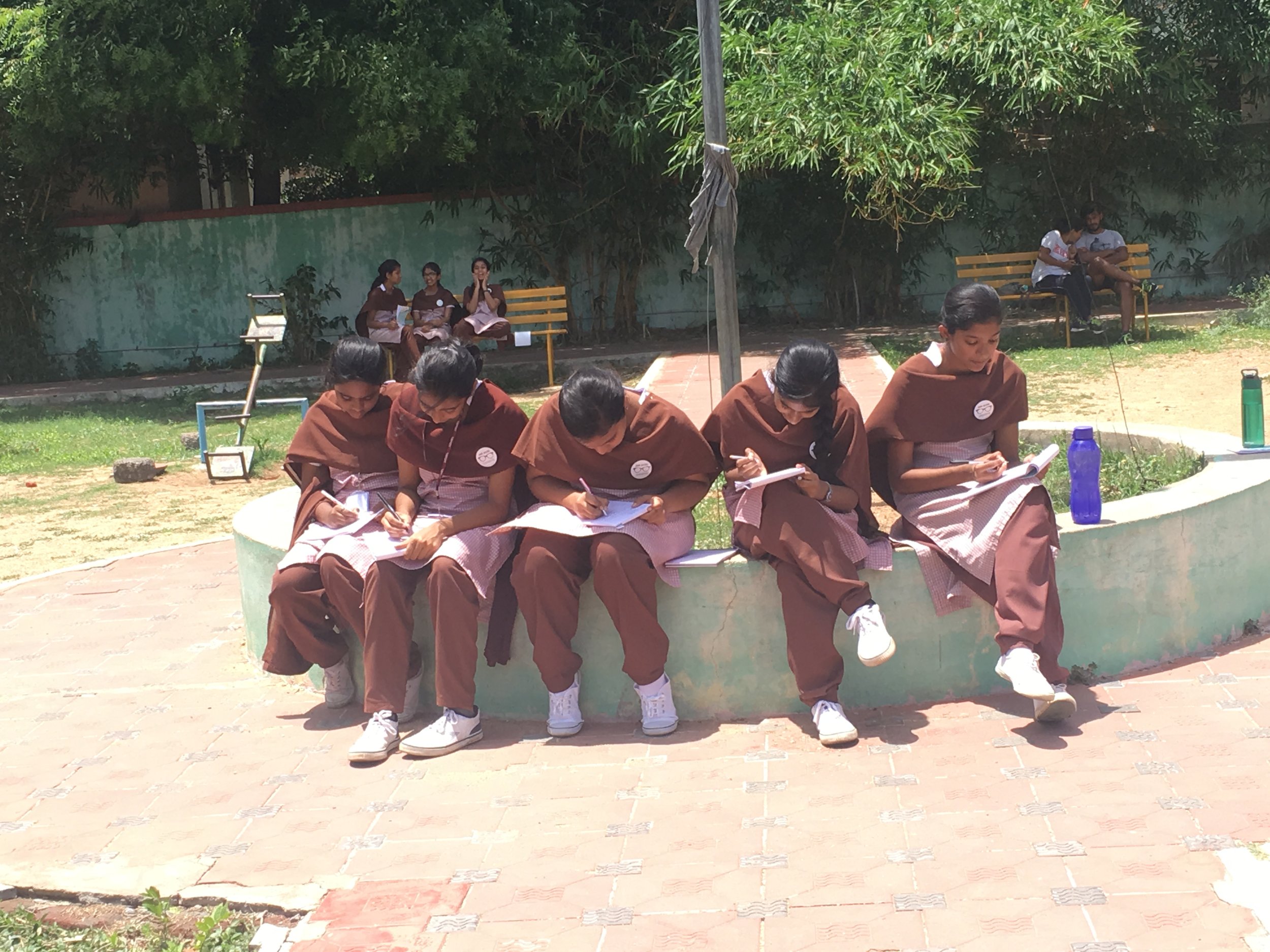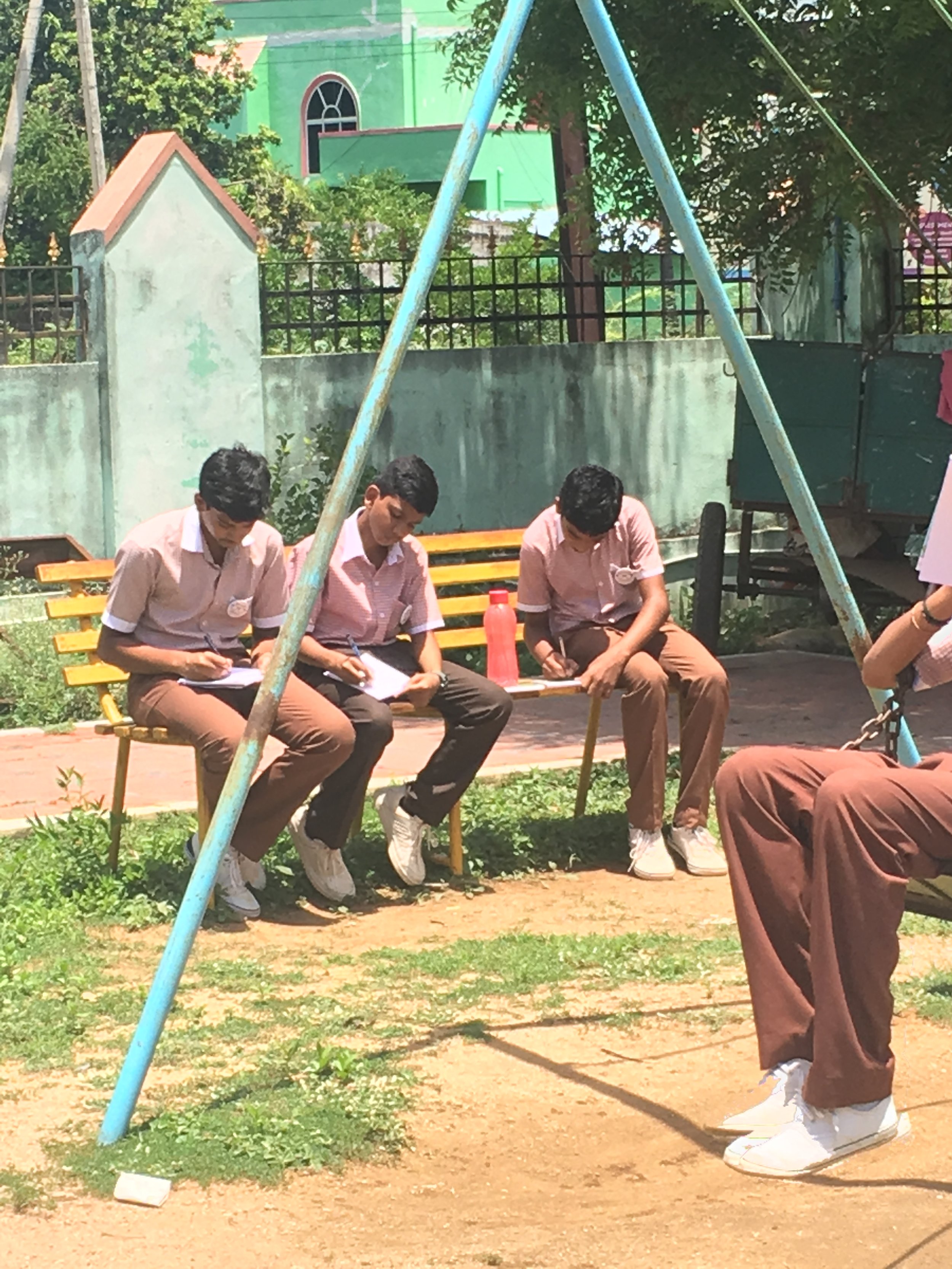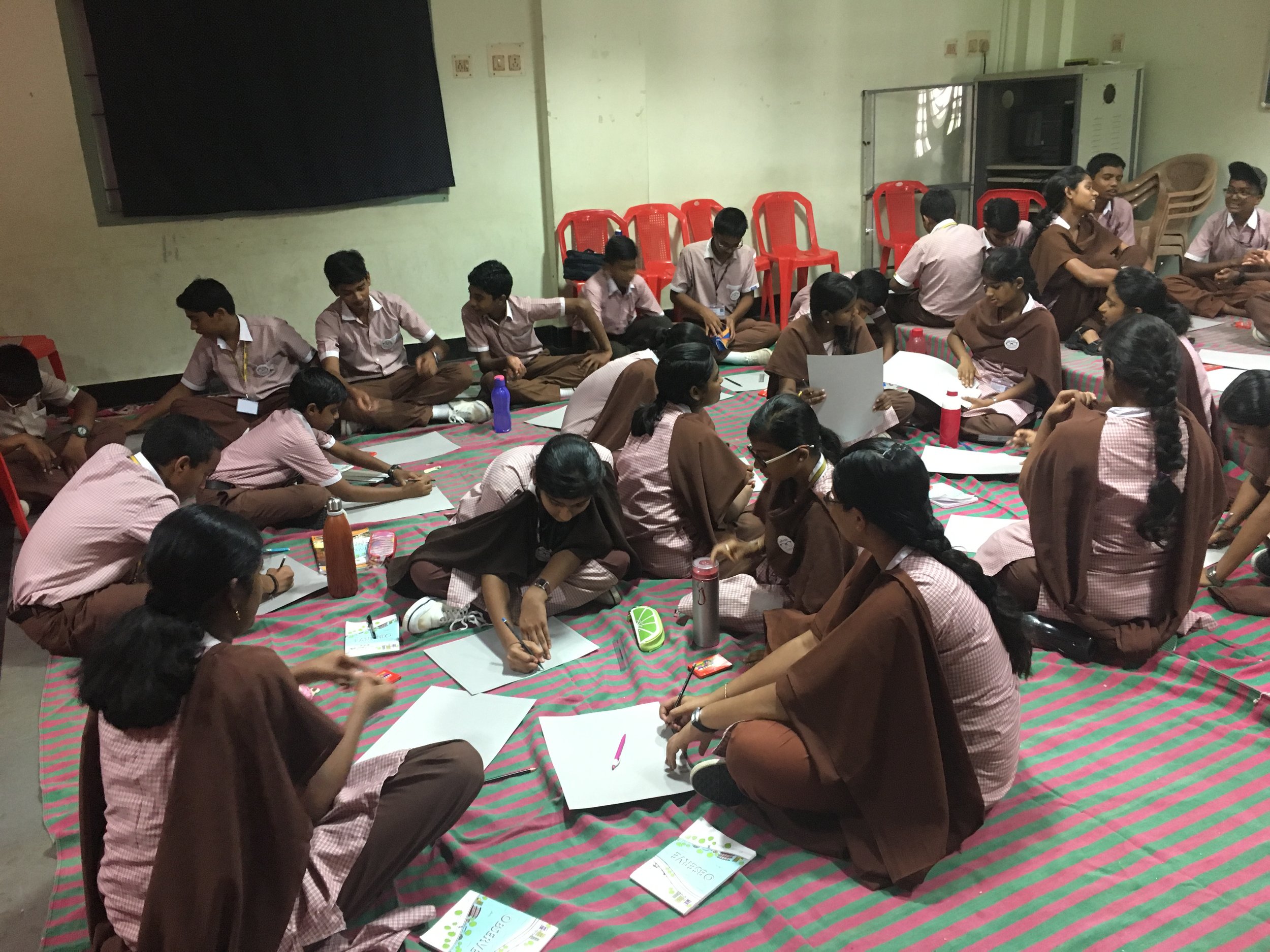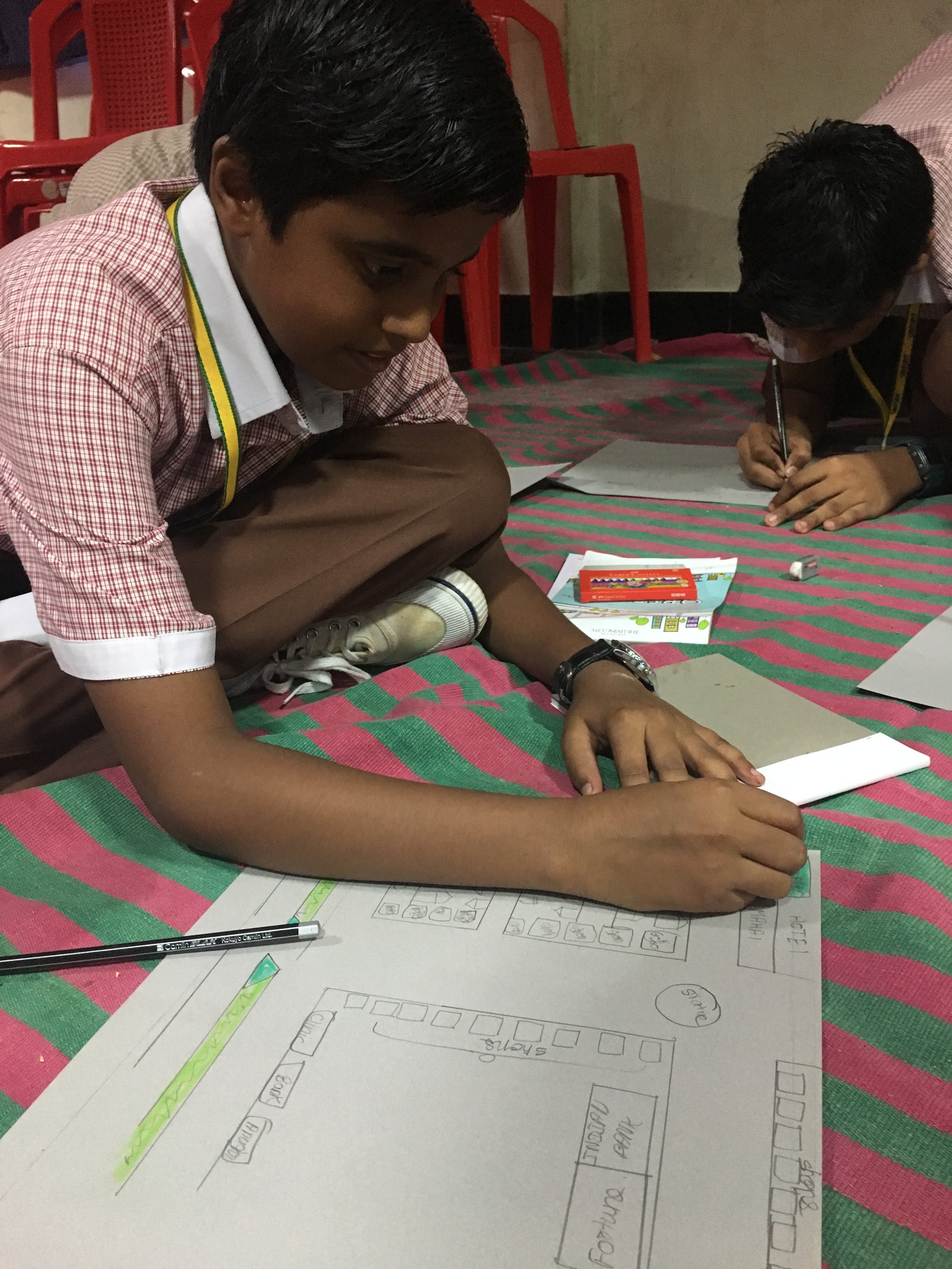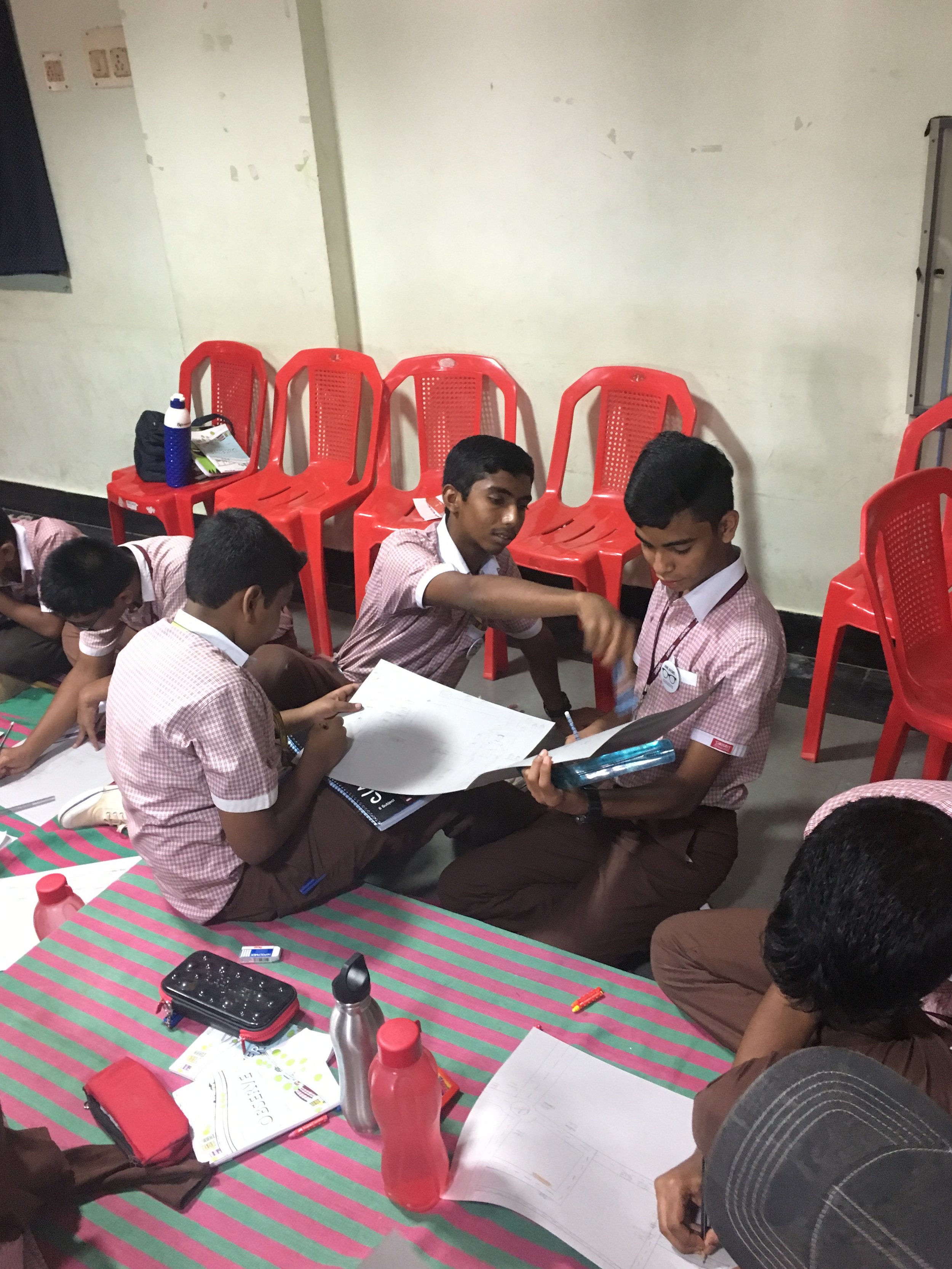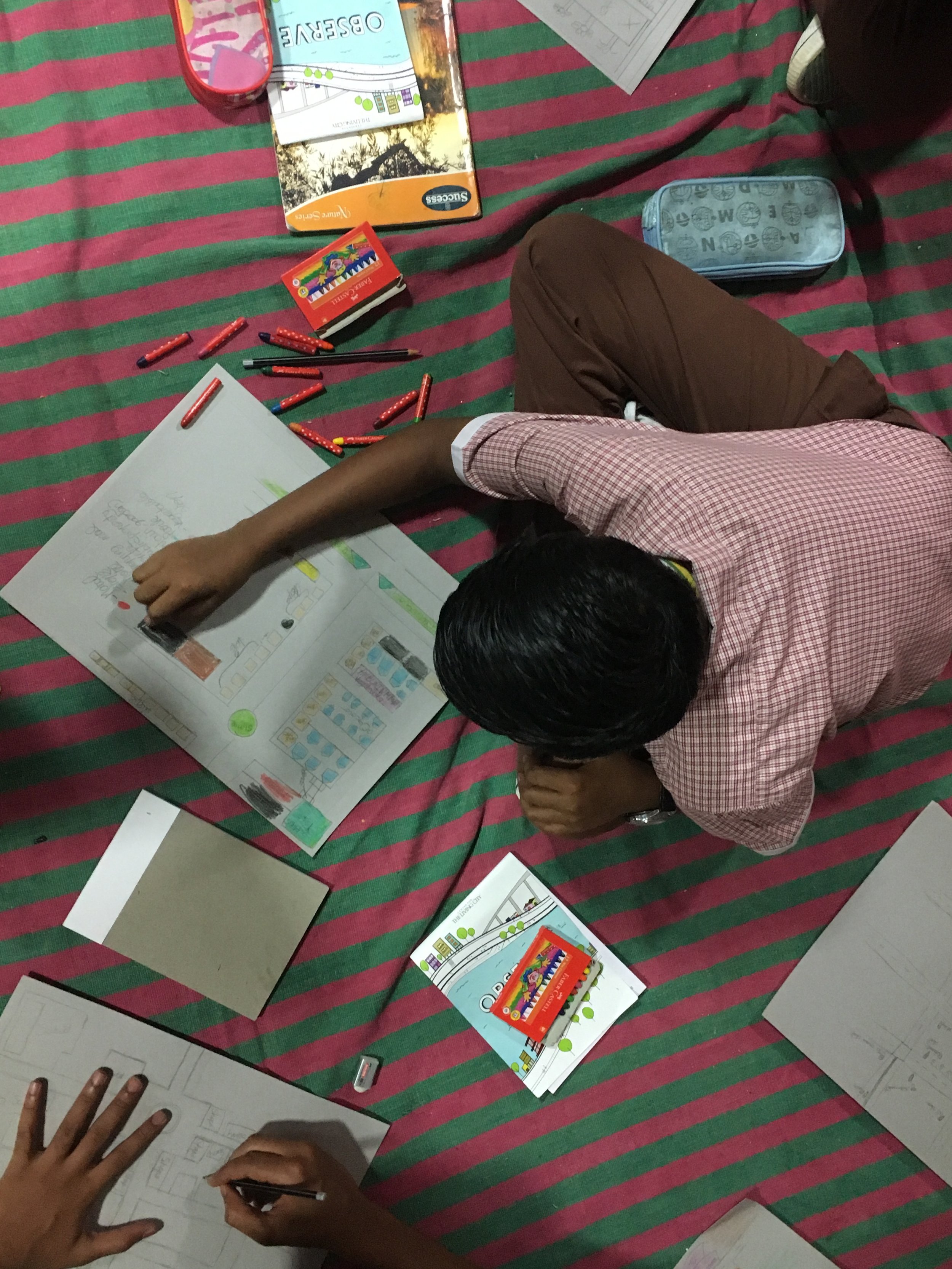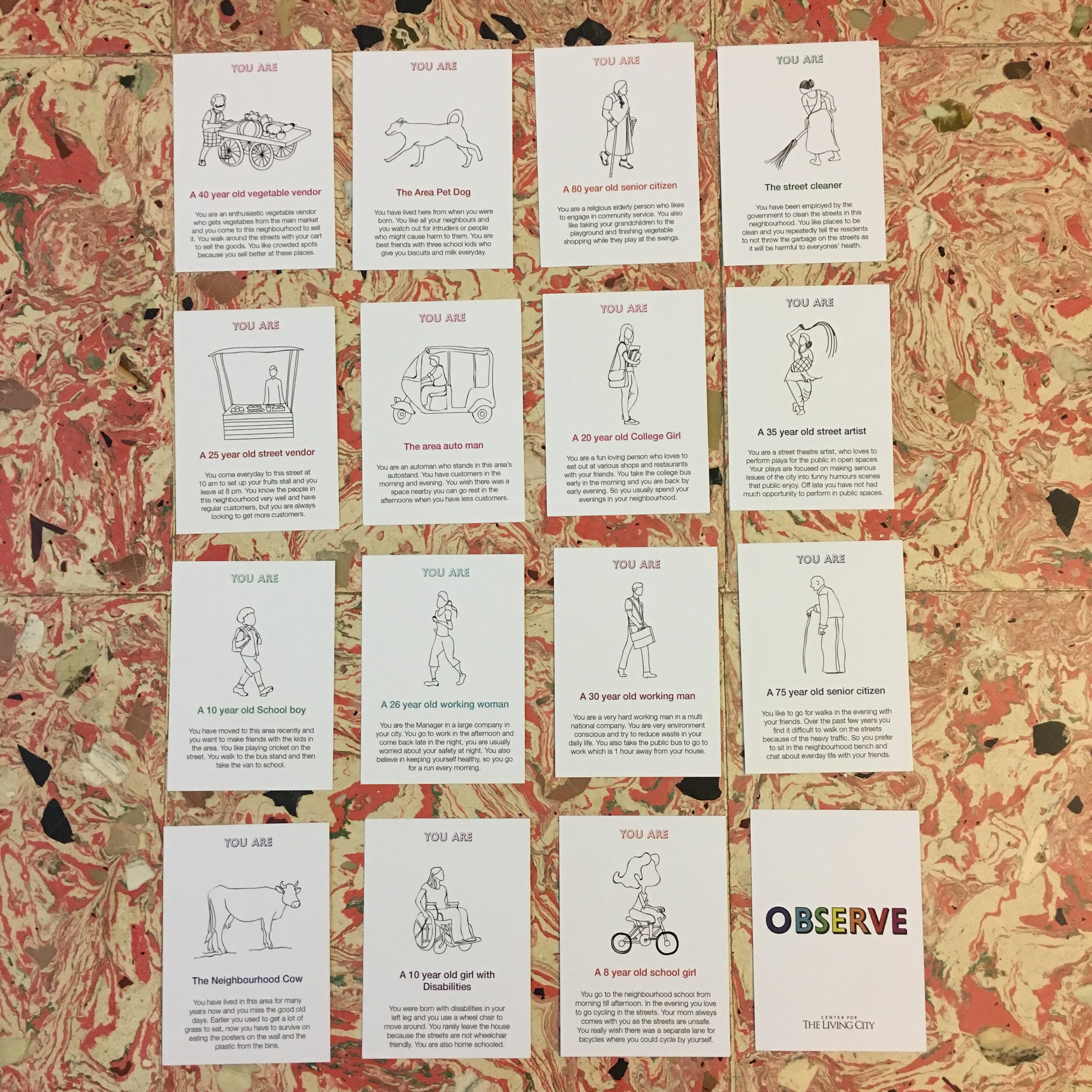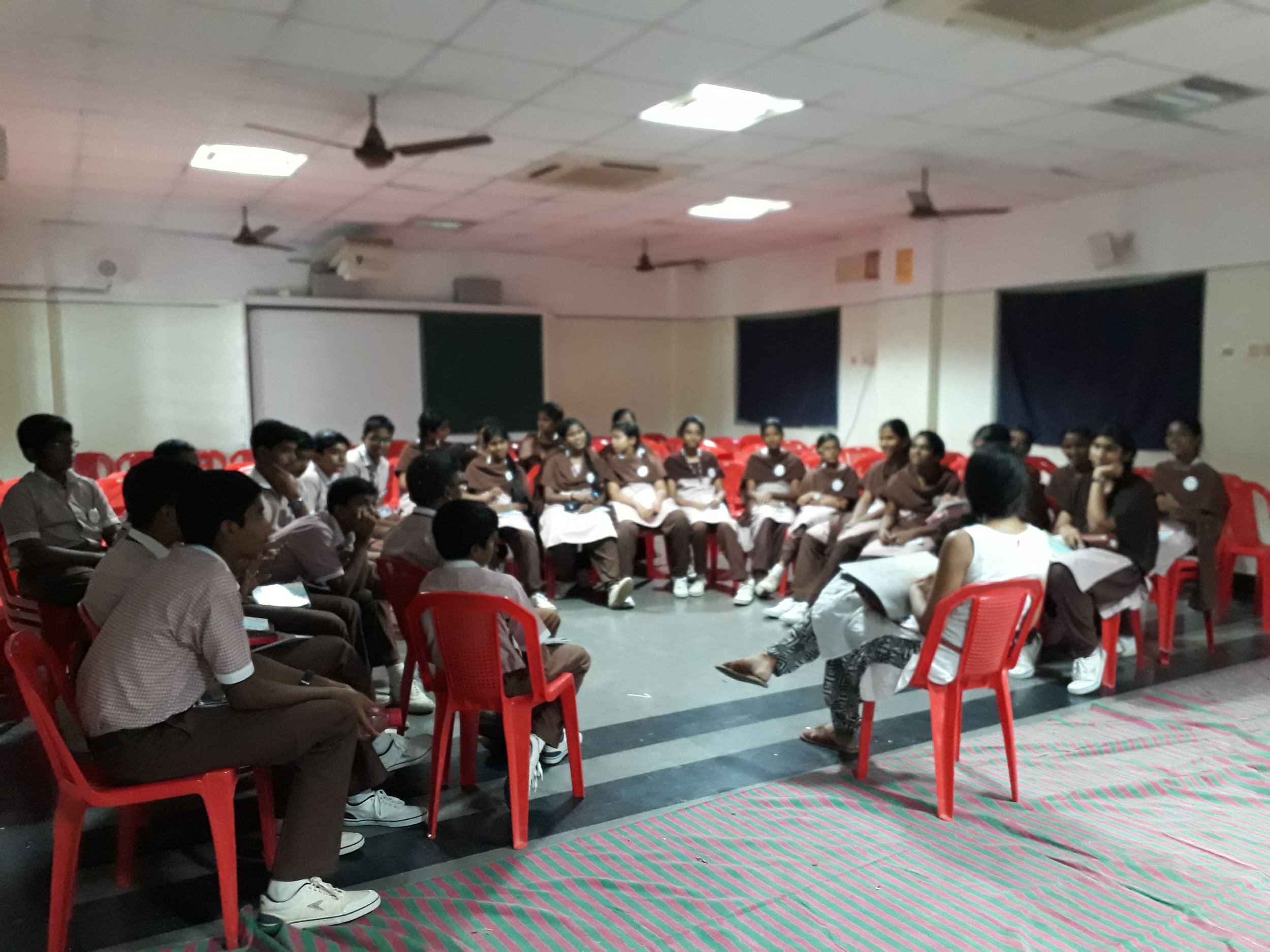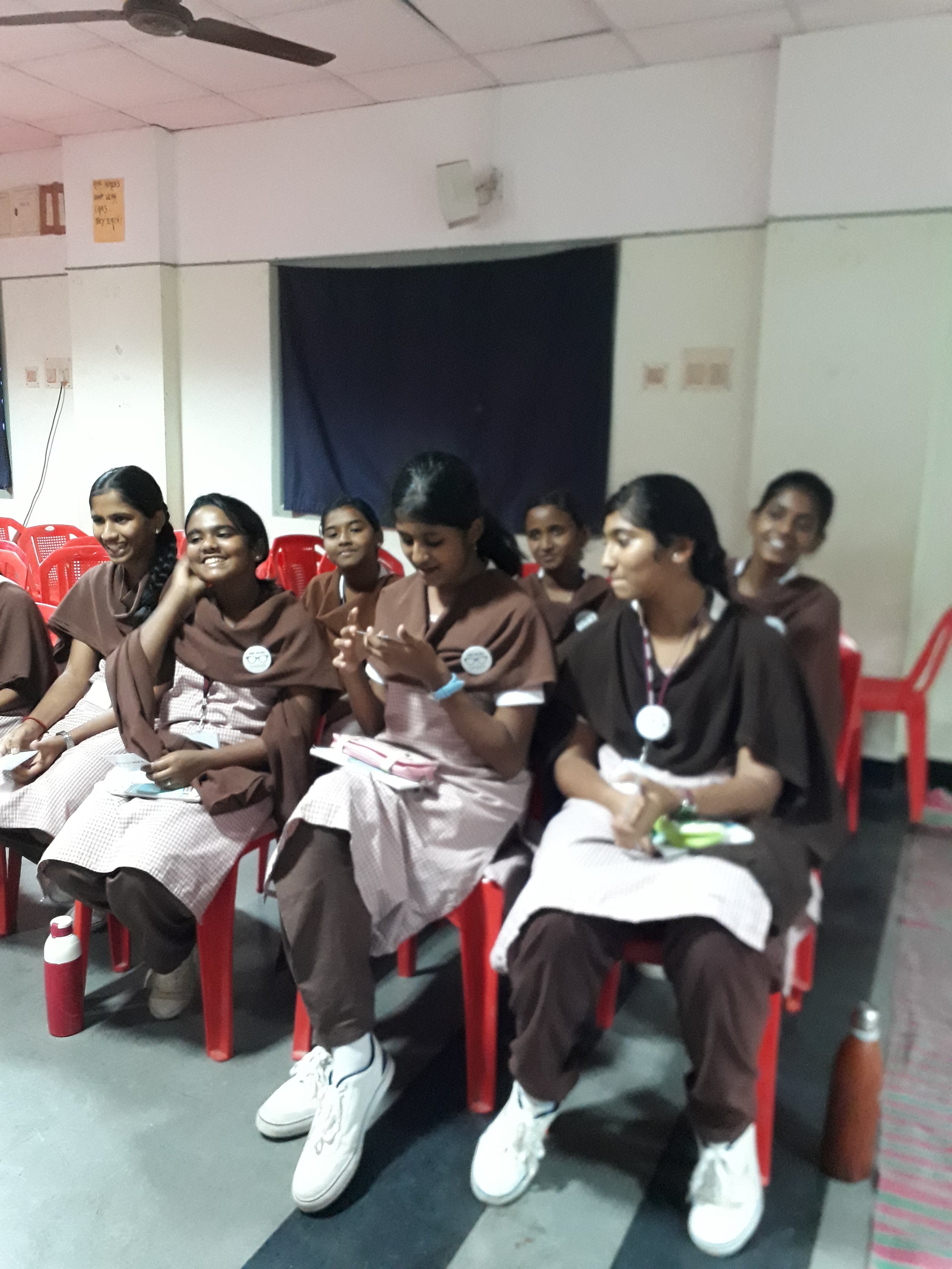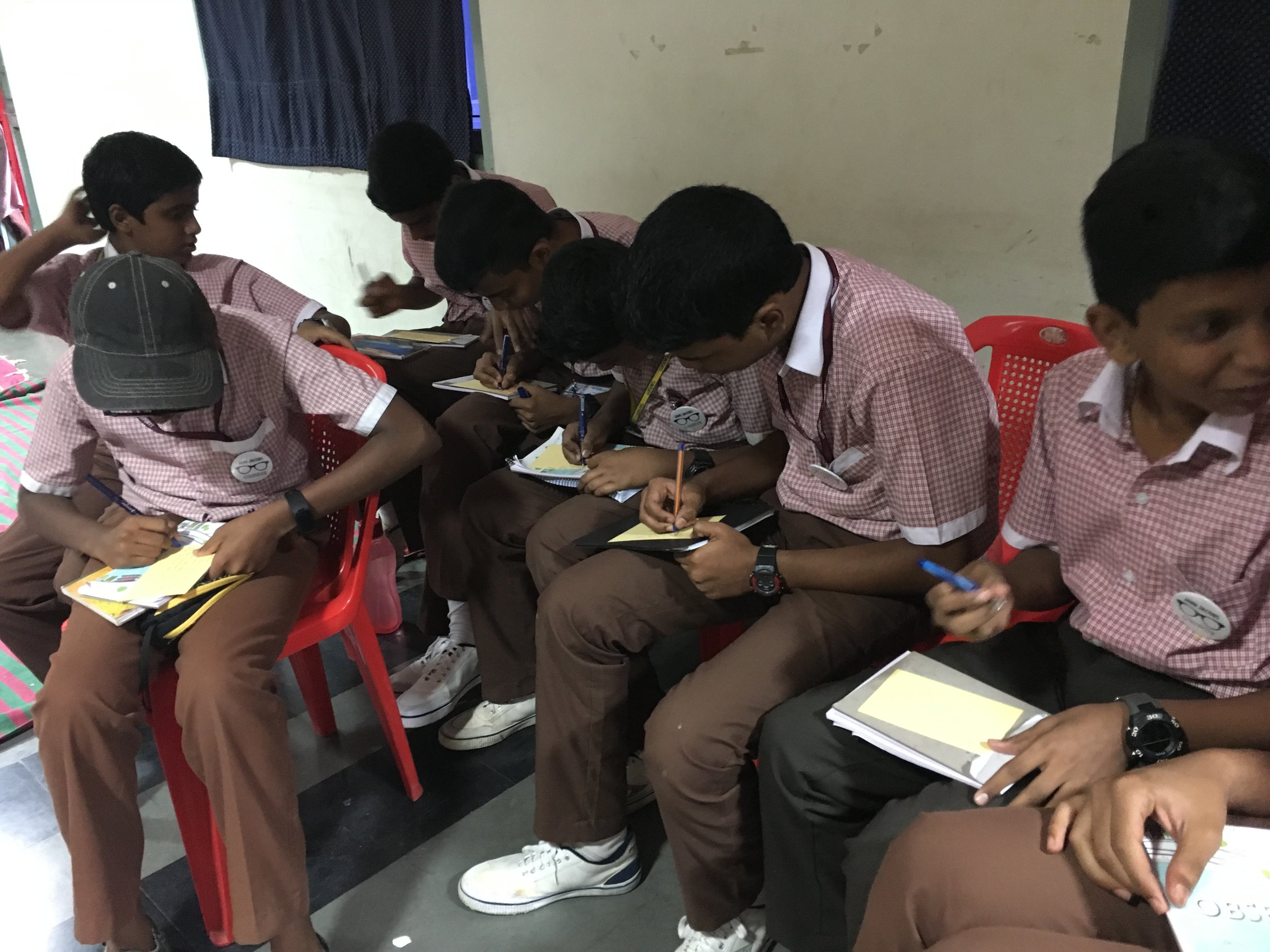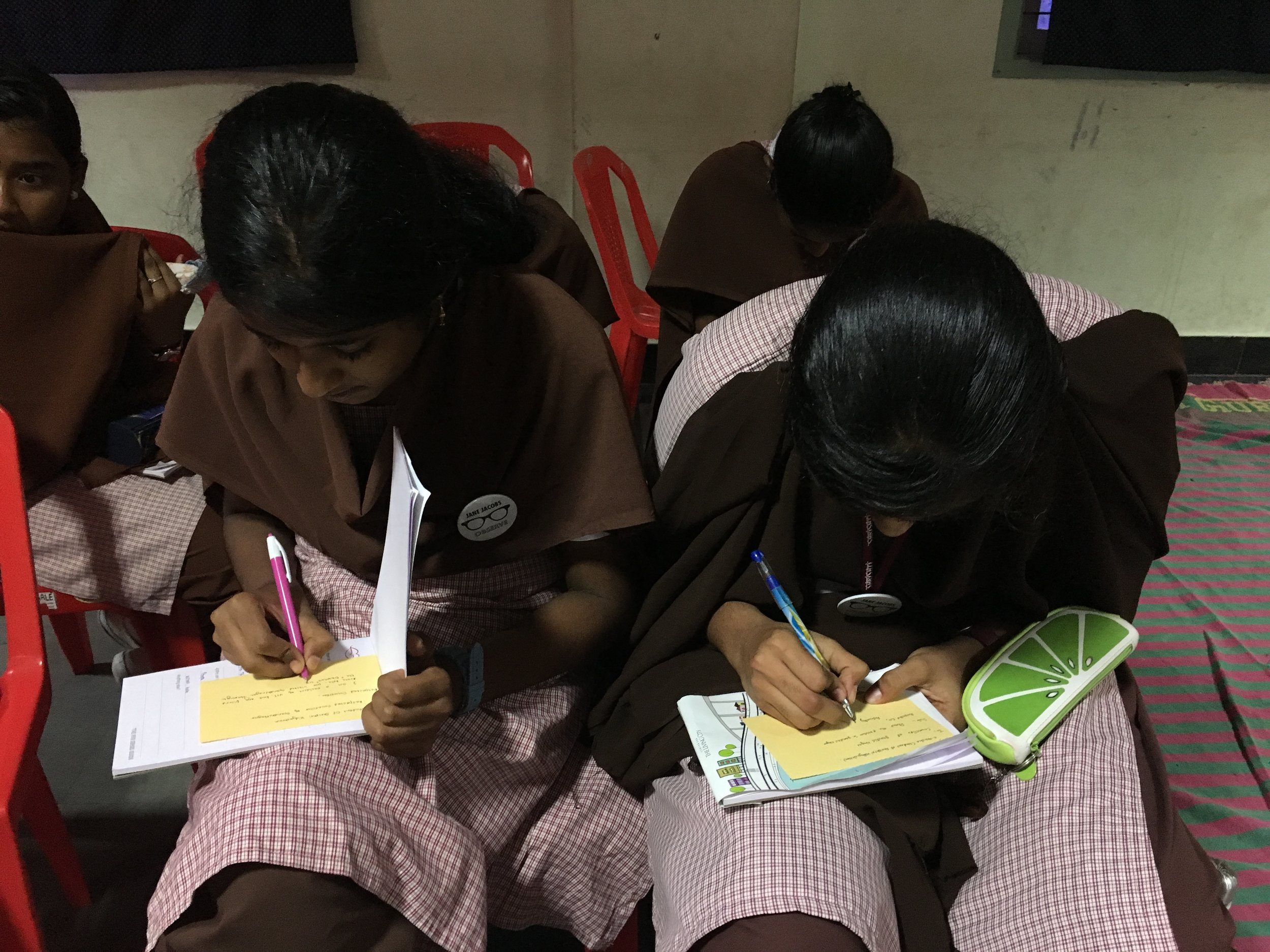“Cities have the capability of providing something for everybody, only because, and only when, they are created by everybody.”
The Observe! workshop series is aimed at developing and amplifying youth voices by guiding them through a series of exercises to pay attention to their cities, understand its functioning, rethink the city based on their observations and to effectively communicate the change they desire.
It was the first of the Observe workshop series in India and I was nervous as the day began and for many reasons. Firstly, because I was going back to my school where I completed my higher secondary schooling and I was going to be on the other side of the students. Secondly, I was unsure if the students would be receptive to the idea and actively engage in observing and learning about their city. Fortunately, all of these inhibitions vanished as the day progressed.
Vidhya Mohankumar and I arrived at Shrishti Vidhyashram Higher Secondary school, Vellore on the 18th of June 2018 at 8:30 am. The workshop was to be conducted with the 9th standard students and they assembled in the school lobby. A maximum of 30 students was the limit for the workshop but 60 students wanted to take part in it. With the promise of coming back and scheduling another session for remaining half of students, we led the first 30 students to the workshop hall.
Introducing Observe!
The workshop began with a round of introductions from the students and where they resided in Vellore. Later on we introduced the Observe! workshop to the students and also spoke about The Center for the Living City briefly. After informing them of the day’s schedule, we kicked off with the first exercise- The Janu(e) story telling cards
Janu(e) Story Telling Cards
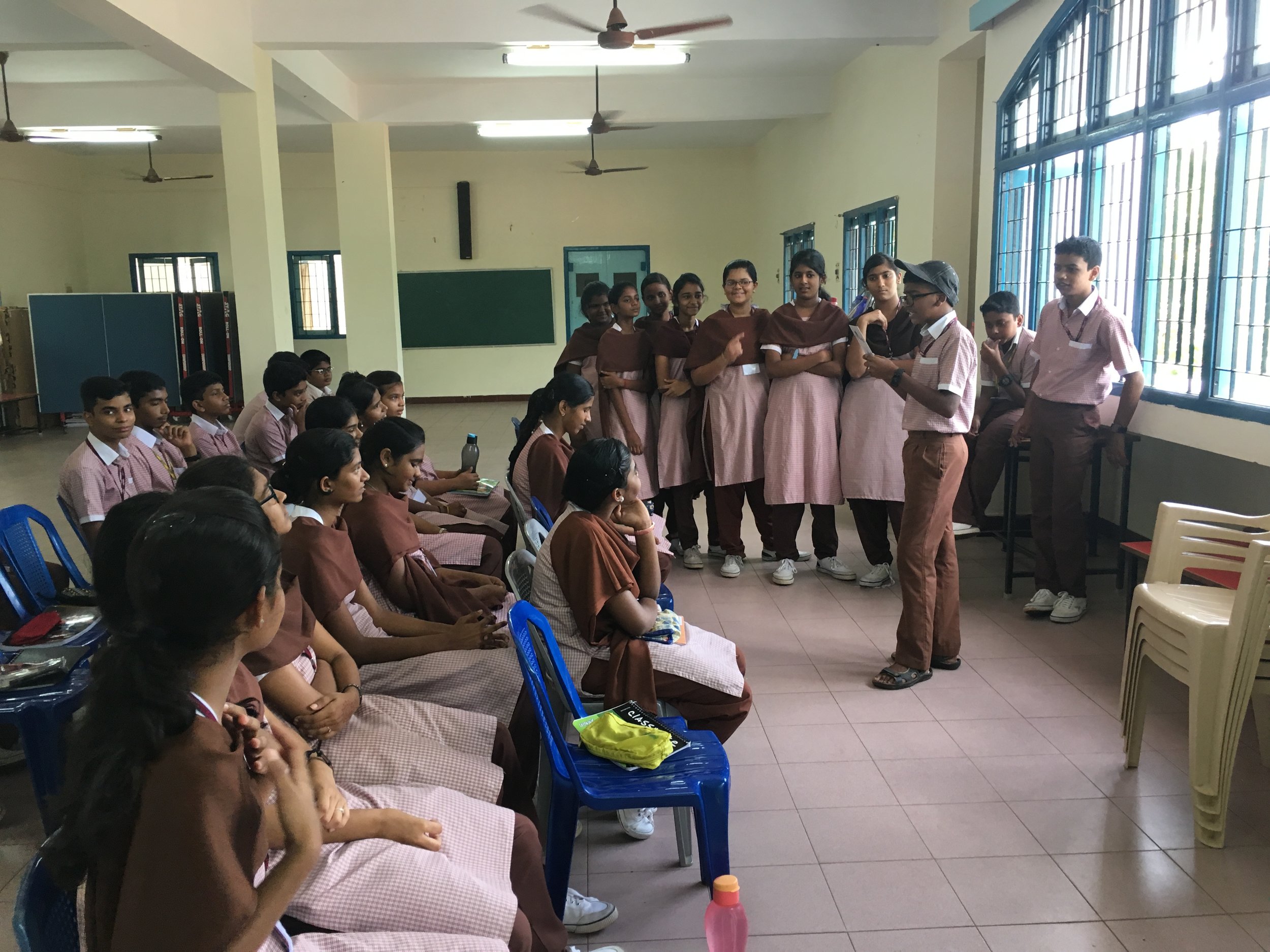
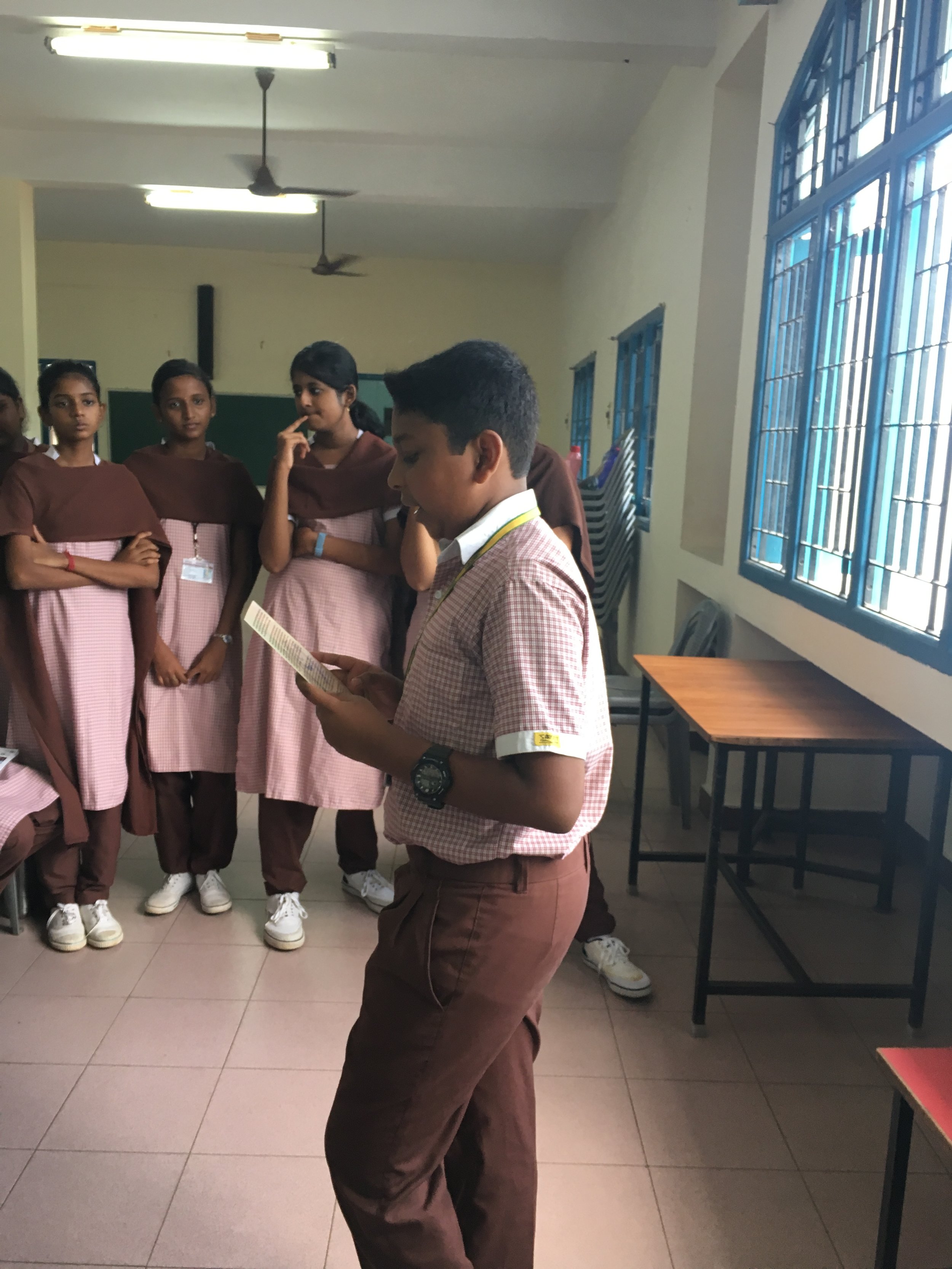
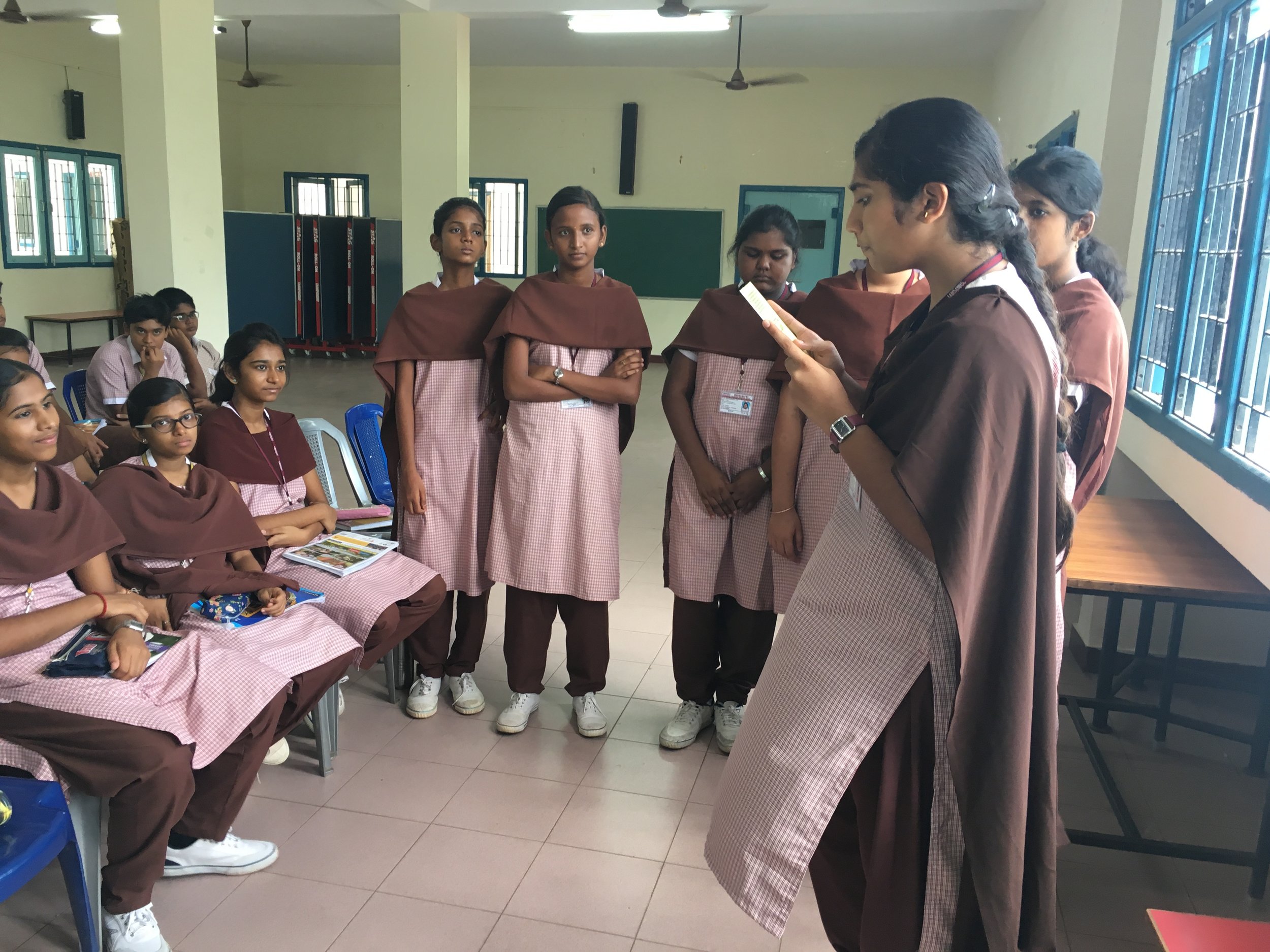
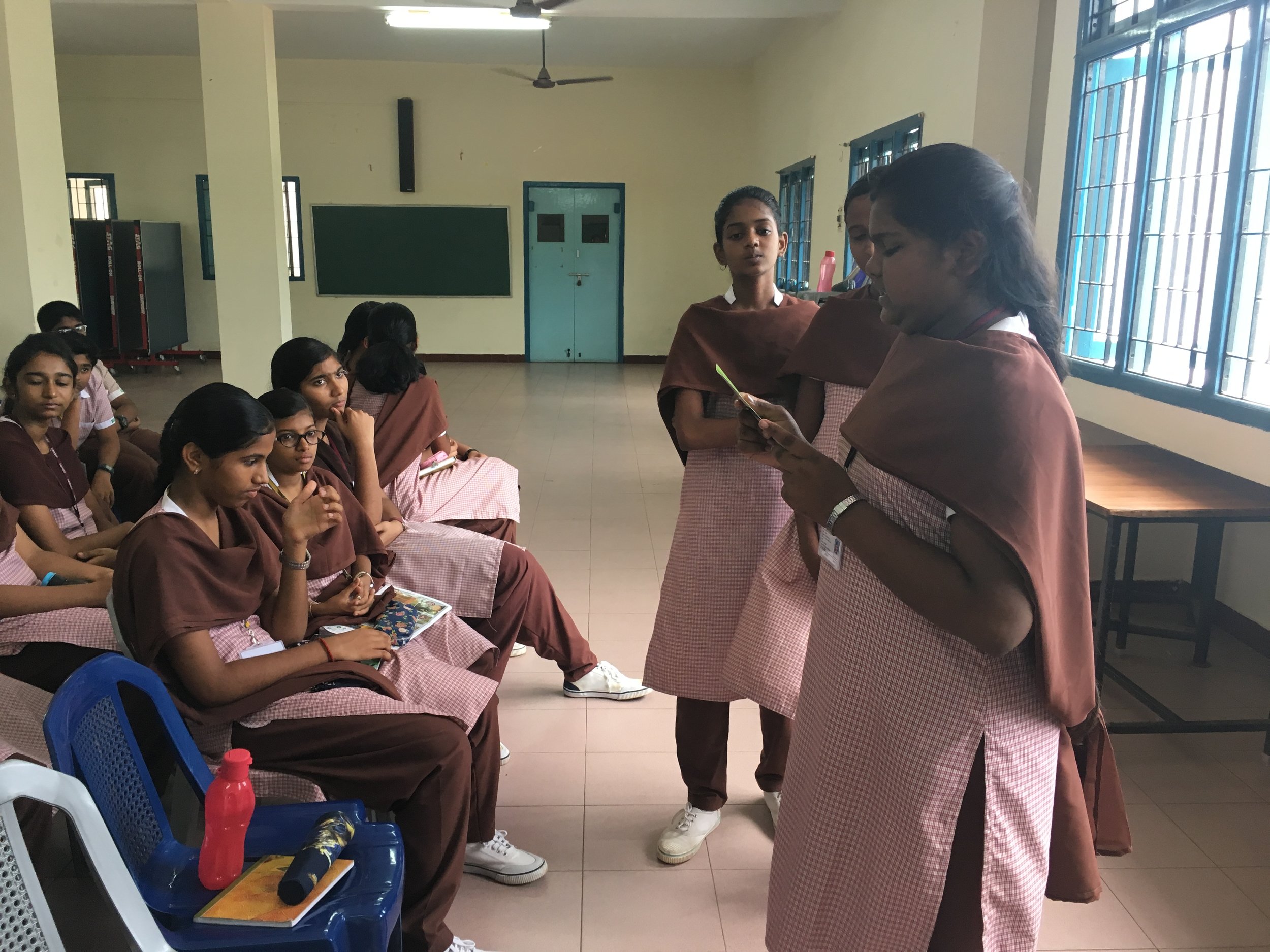
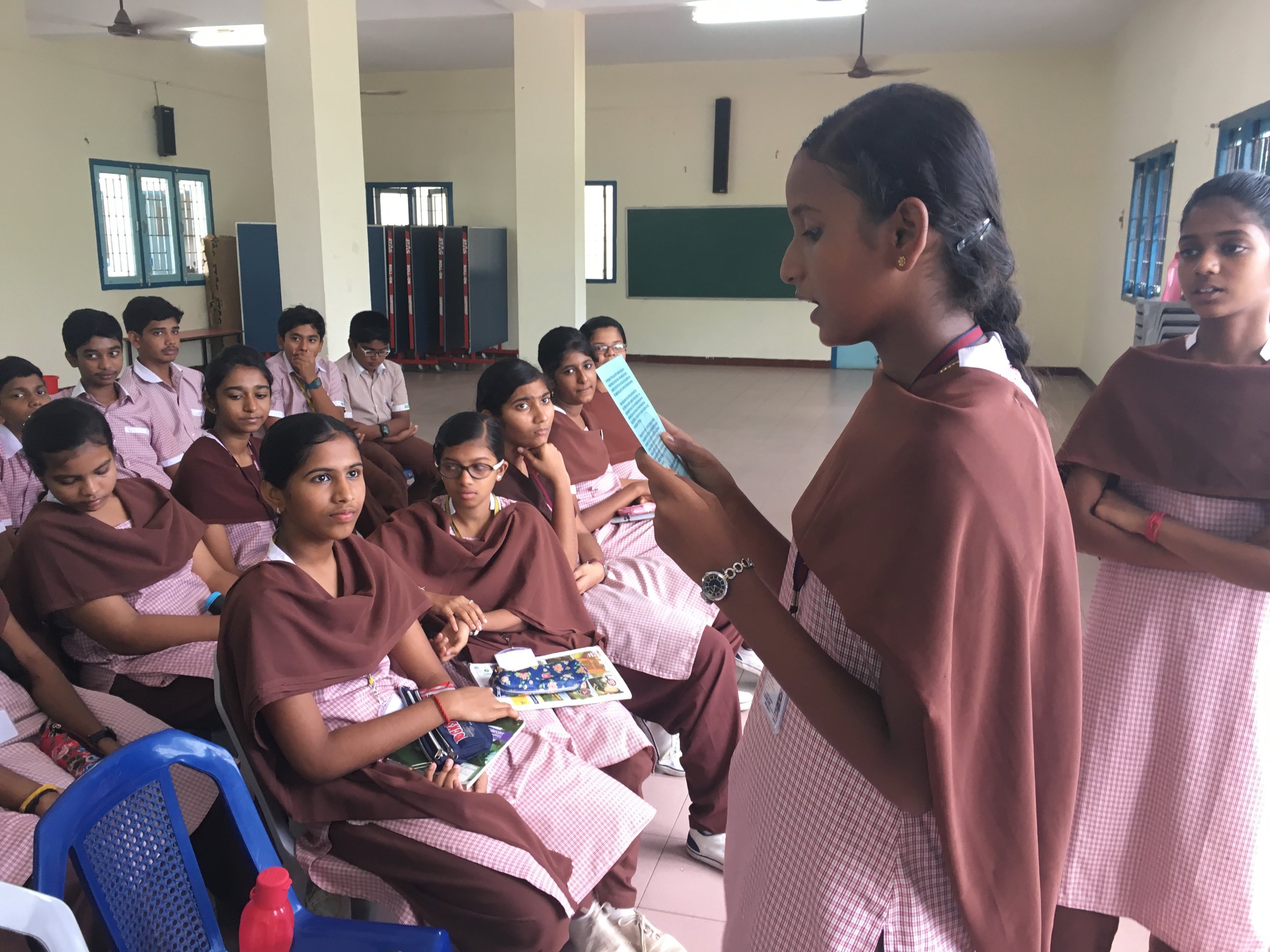
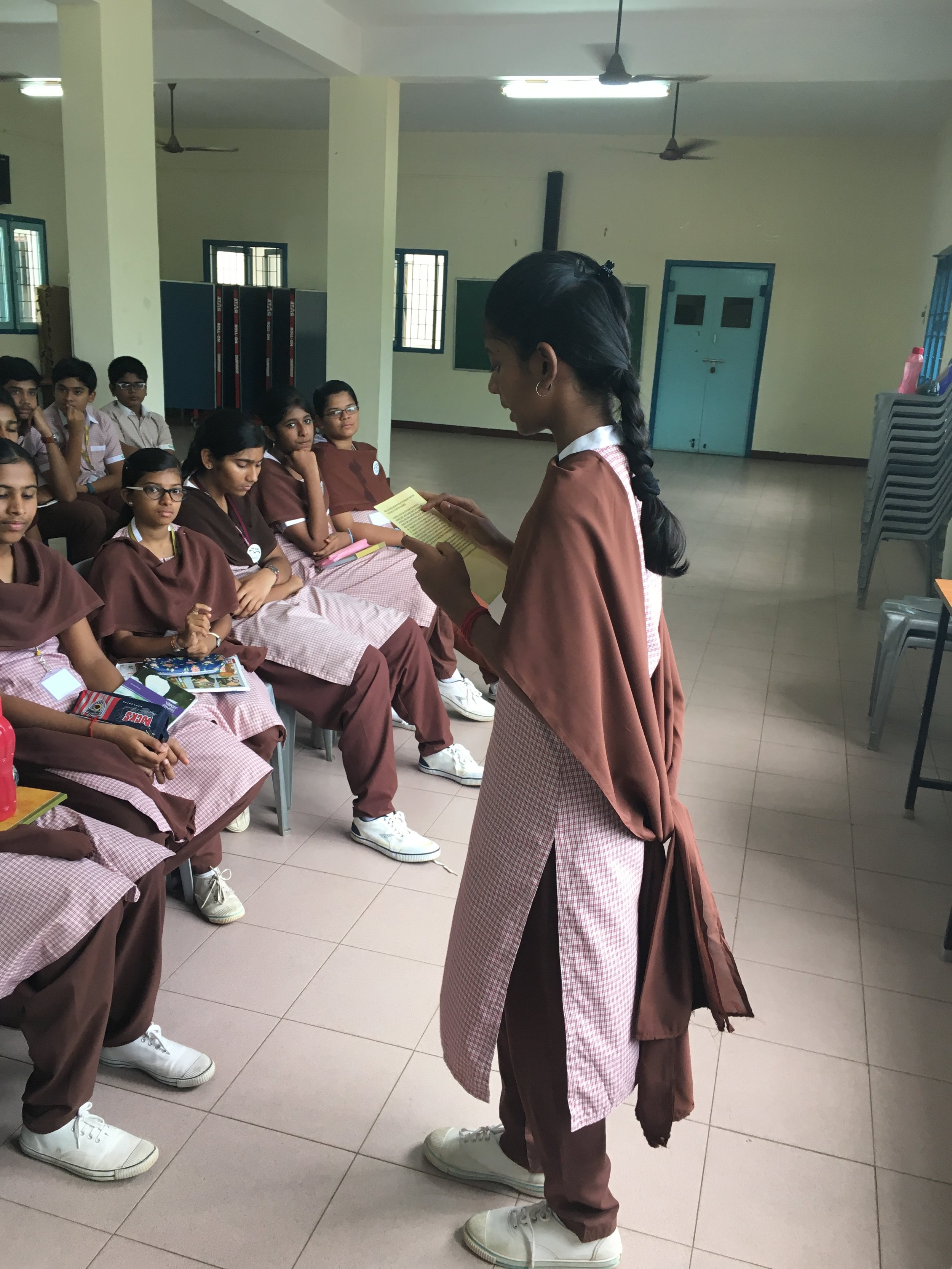
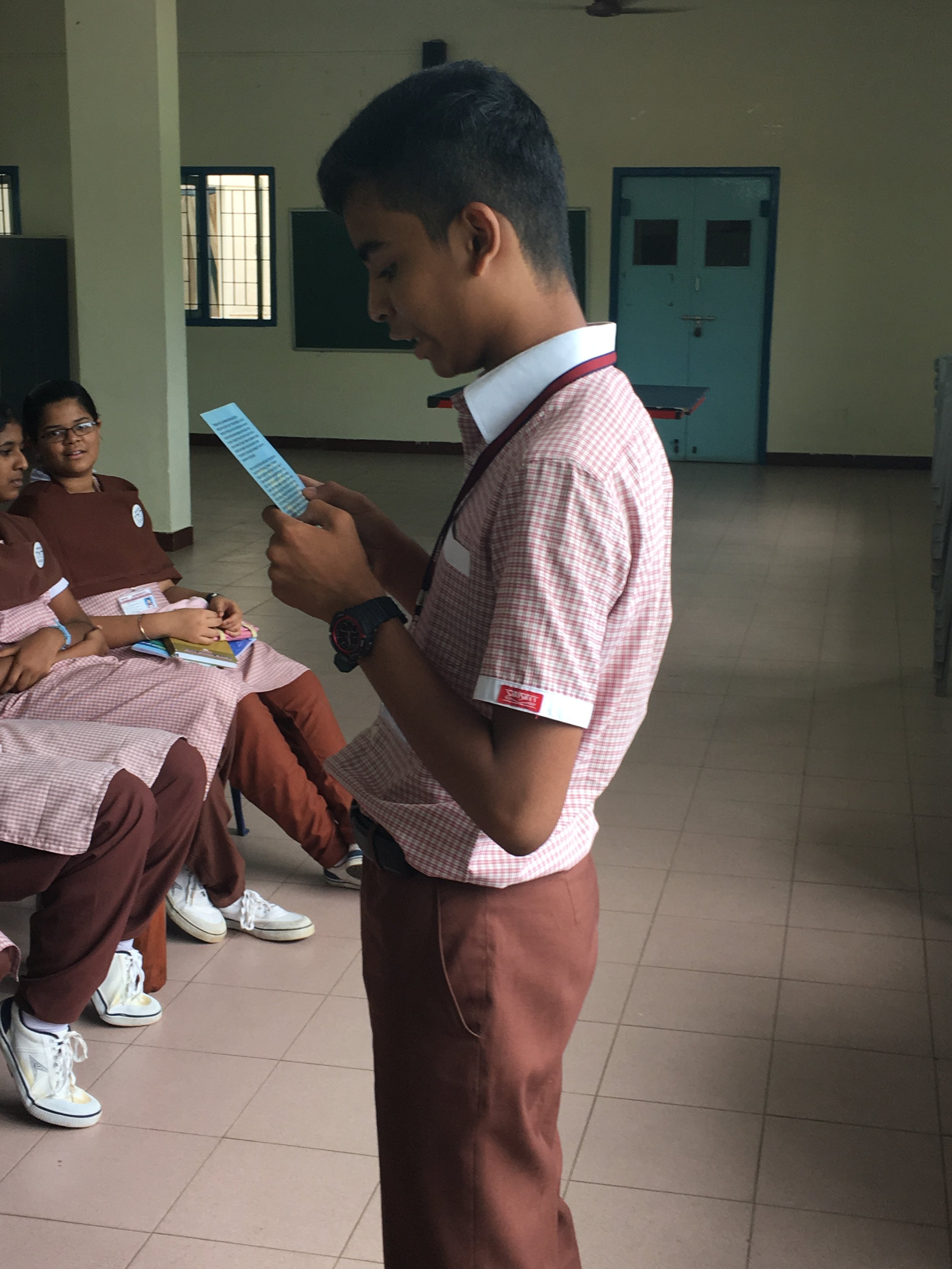
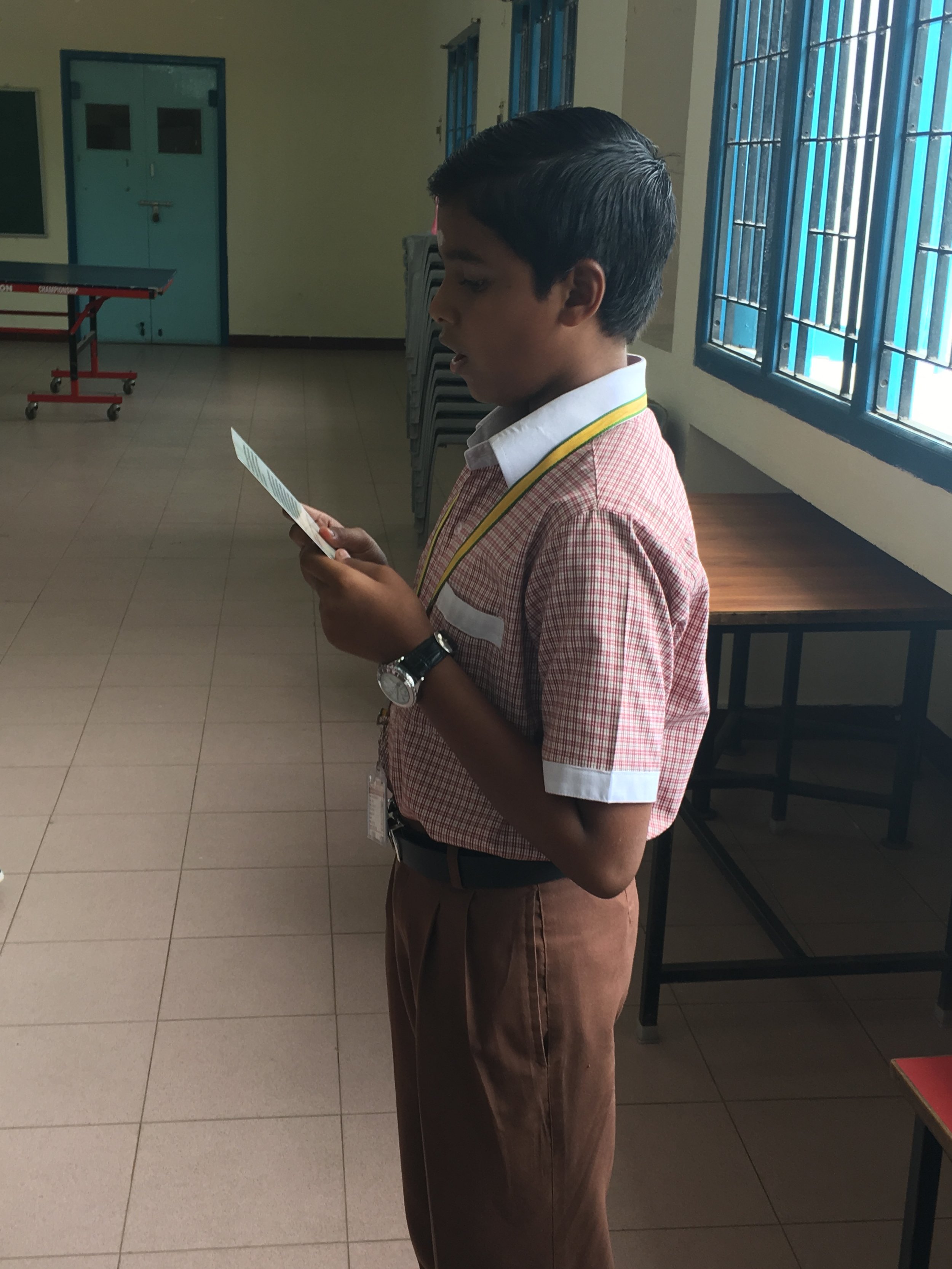
Twelve students volunteered to be a part of the story telling activity. Each student was handed one card and they had to loudly read out the story written in their card. Together, all the cards form the story of Janu from Chennai who became a world renowned journalist and urbanist who fought for the notion that cities are for its people.
At the end of each card was a question which the other students had to answer. This made the whole activity a very interactive session as students would listen to the story carefully and eagerly wait for the question. They promptly took part in a discussion for each question which broke the ice with the students with regard to Jane Jacobs’s urban concepts. They actively spoke about a wide array of topics ranging from road conditions, deterioration of green cover, increase in the number of automobiles, and city water bodies not catering to its residents. Towards the end of the discussion I was surprised that many of the students were already environmentally conscious and wanted to preserve the natural resources in the community.
After the story telling activity and discussions, we revealed to them that this was actually the story of Jane Jacobs a renowned journalist and urbanist who changed the way urban planners think and design cities. Immediately enthralled by her achievements, the students wanted to know more about her, which led to the second exercise.
“Over the past few years a lot of vehicles are being bought in my neighbourhood and it causes a lot of traffic and pollution”
Jane Jigsaw
“I would fight to preserve the trees, parks and water bodies in my neighbourhood”
The second exercise came as a fun surprise to the students when they discovered that behind their story cards was a jigsaw puzzle which would form an image of Jane Jacobs once fully assembled together. All the students ran to the table with excitement, where they would put the jigsaw together. Upon solving the jigsaw and seeing Jane Jacobs there were many opinions voiced about if her life story matched their imagination of Jane Jacobs’s appearance. We then handed out Jane Jacobs badges that the students proudly pinned on their uniforms. It was evident that Jane Jacobs had become an inspiration for every participant present there.
“Jane Jacobs has definitely become an inspiration for me and I want to fight for my community when I grow up”
Observe with your Five Senses
The next session involved us travelling to a nearby neighbourhood to put the observational skills the students learned from the morning to test. Vidhya and I distributed ‘Observe with your five senses’ notepads to all the participants which they would be using while walking around the neighbourhood. The notepad has five sections each involving one sense - sight, hearing, smell, touch and taste. Each section has questions which nudge the participants to use all their senses to keenly observe the neighbourhood during the walk. The students, one teacher, Vidhya and I boarded the bus that was to take us to Gandhi Nagar, a mixed-residential neighbourhood which was near the school. All of us disembarked at the Gandhi Nagar circle and got ourselves ready for the walk.
A few of the participants in the workshop lived in Gandhi Nagar and voluntarily took up the role of leaders to take the group around. We walked through a busy commercial road, then turned into quieter residential streets and then visited two parks. The students noticed and took down notes about varying things throughout the walk. One of the things they pointed out was that the storm water drain smells of human waste which could be an indication of the people living near it not having toilet facilities. They also noticed the broken sewers and pedestrian pathways in the area; they complained about the lack of public furniture on streets; they pointed out to religious spaces also serving as public spaces for the aged population in the area; they were angered by the amount of litter and plastic thrown on the streets and more so by a cow standing there and eating it.
“This open rainwater drain smells like feces, maybe the people here don’t have public toilets. That is something for us to think about. ”- participant
We also discovered a community composting pit in a park which served as an opportunity to introduce to the students the need and importance of segregating and composting household waste. After the 45 min walk through the neighbourhood, we walked back to the pick up point and boarded our bus back to the school.
Mental Mapping
Post the lunch break, we handed out art paper and colours to the students and encouraged them to draw mental maps of the area we walked through and mark down the things they noticed during the walk. They came out with various different sketches of how they had observed and experienced the neighbourhood. There were interesting details on these maps showing mental markers of what they remembered in each street.
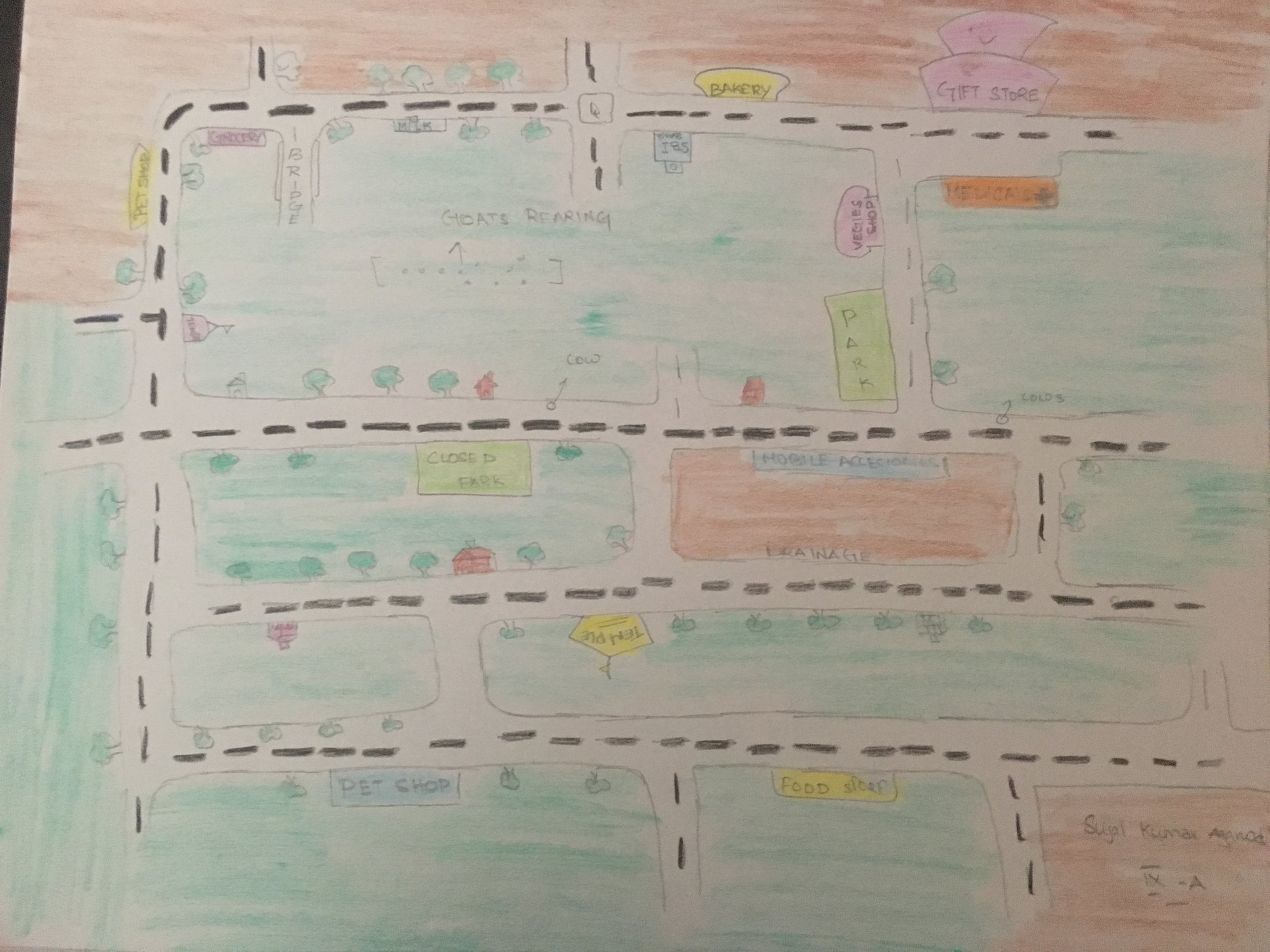
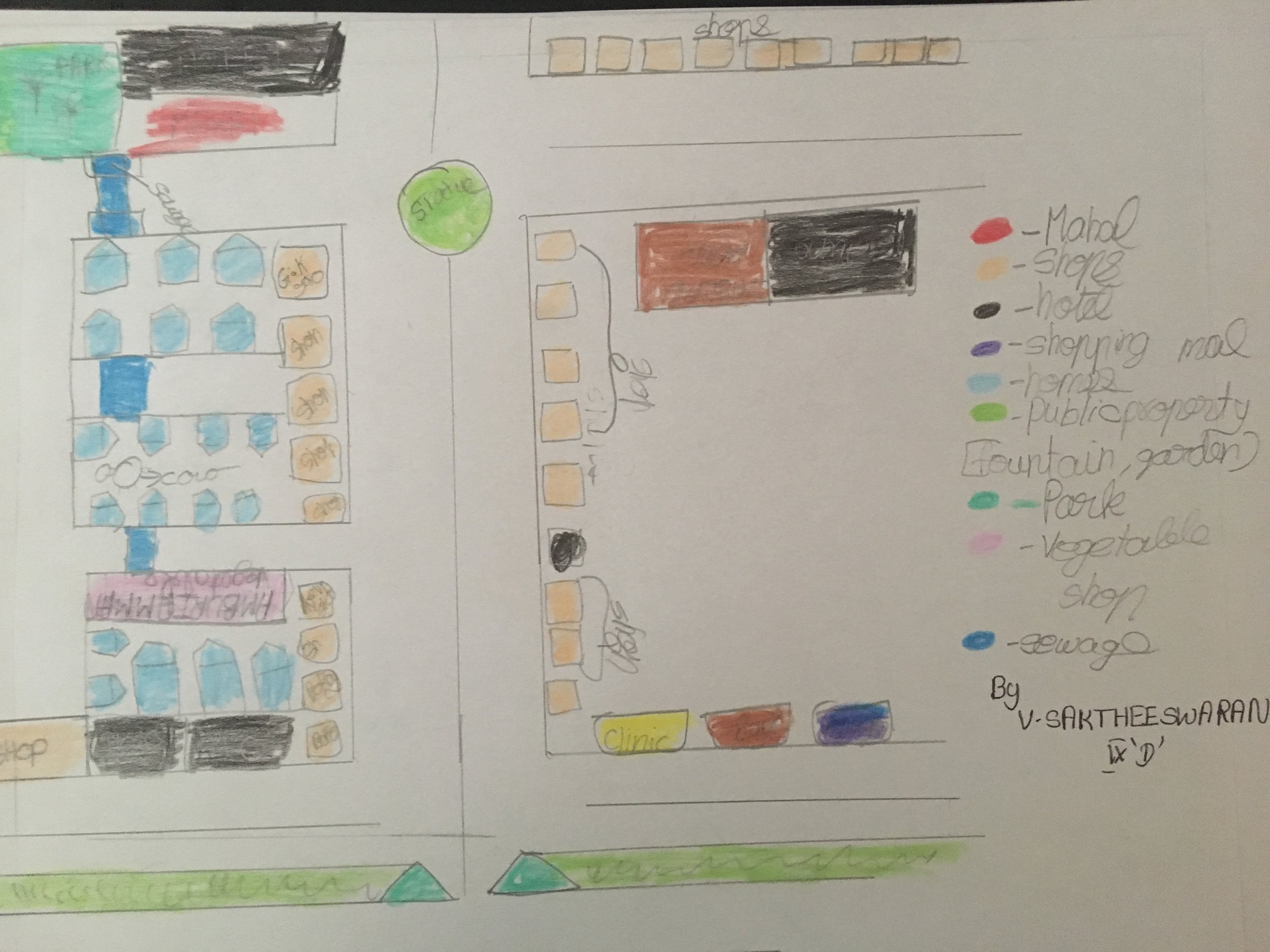
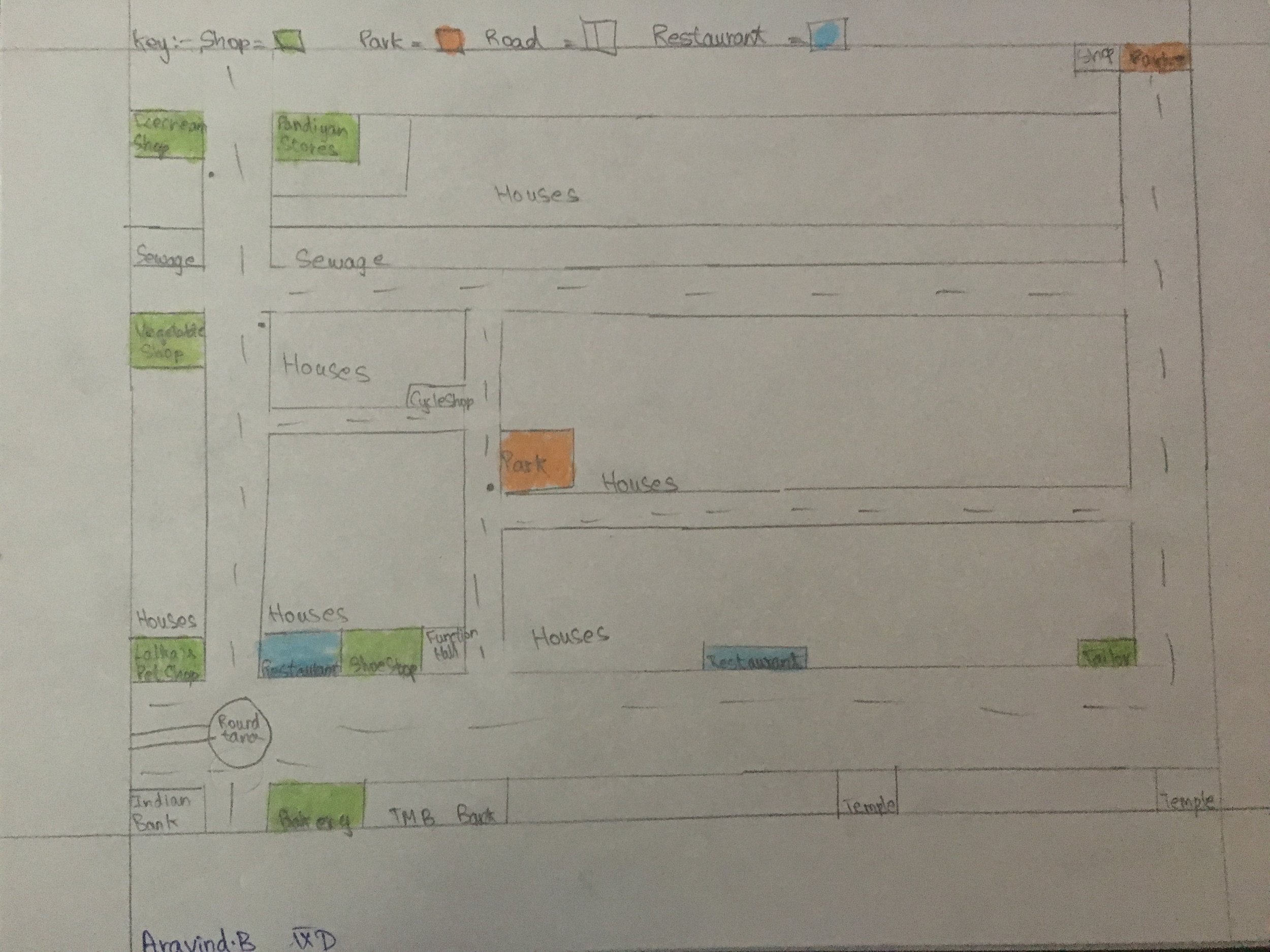
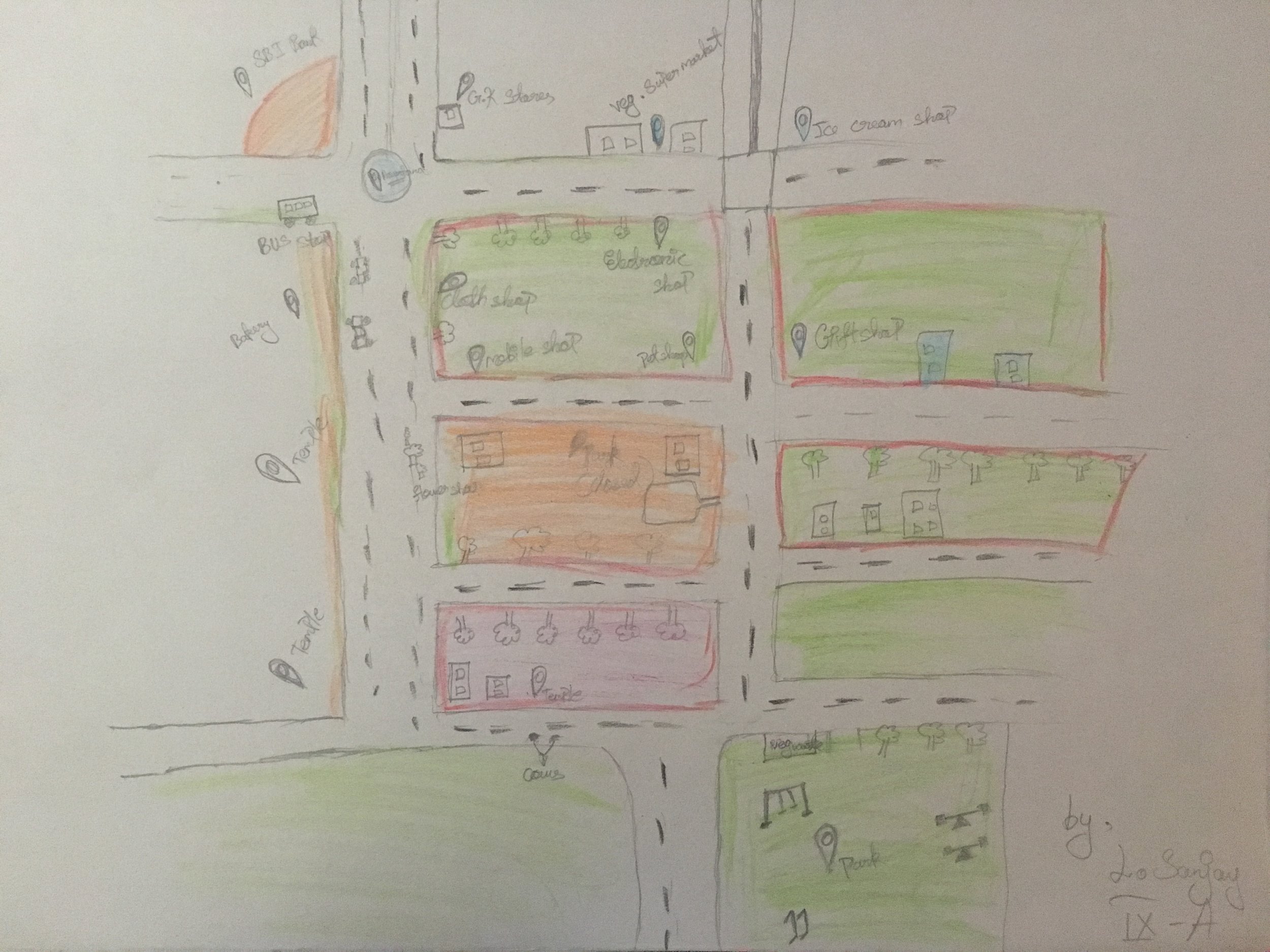
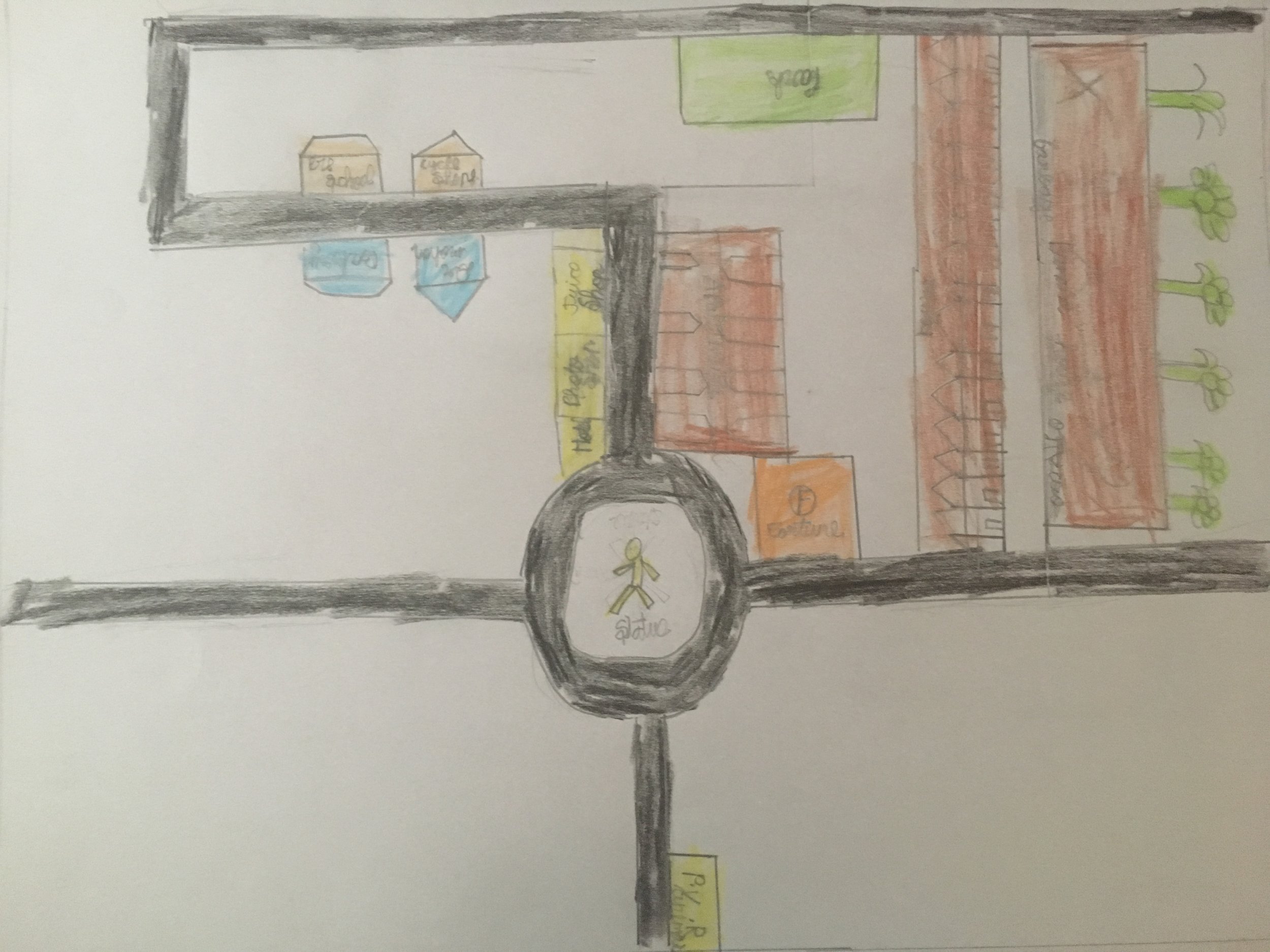
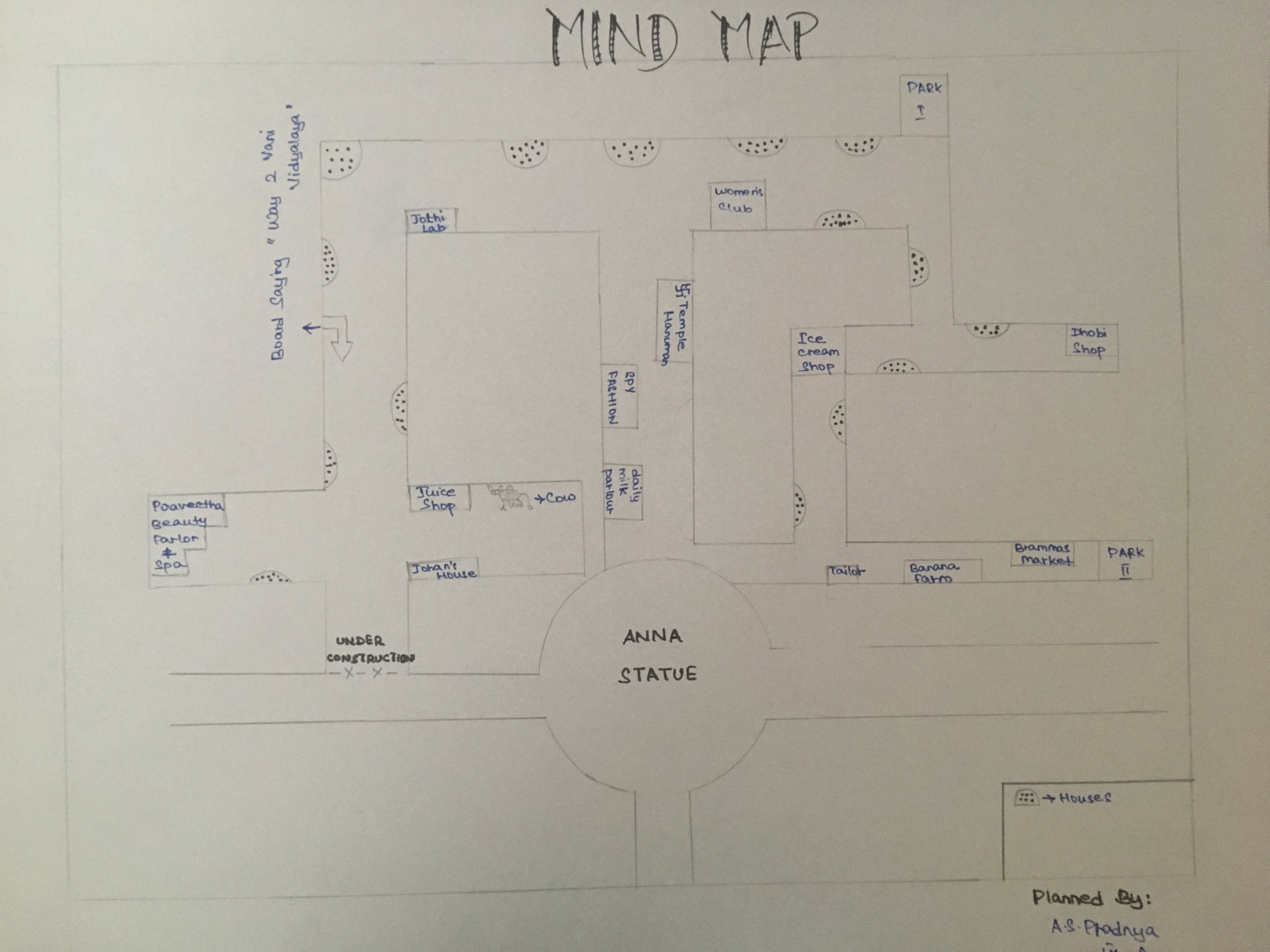
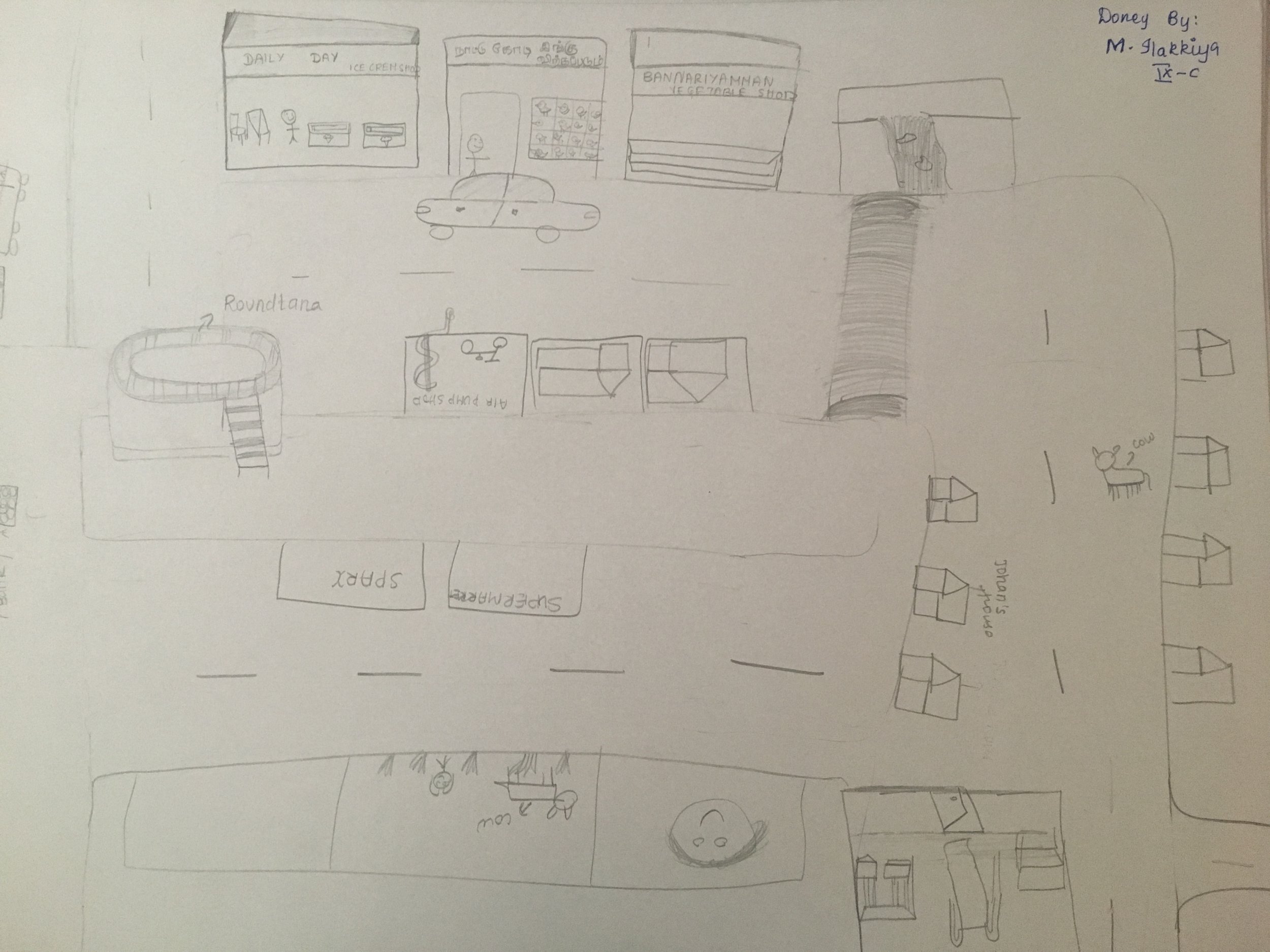
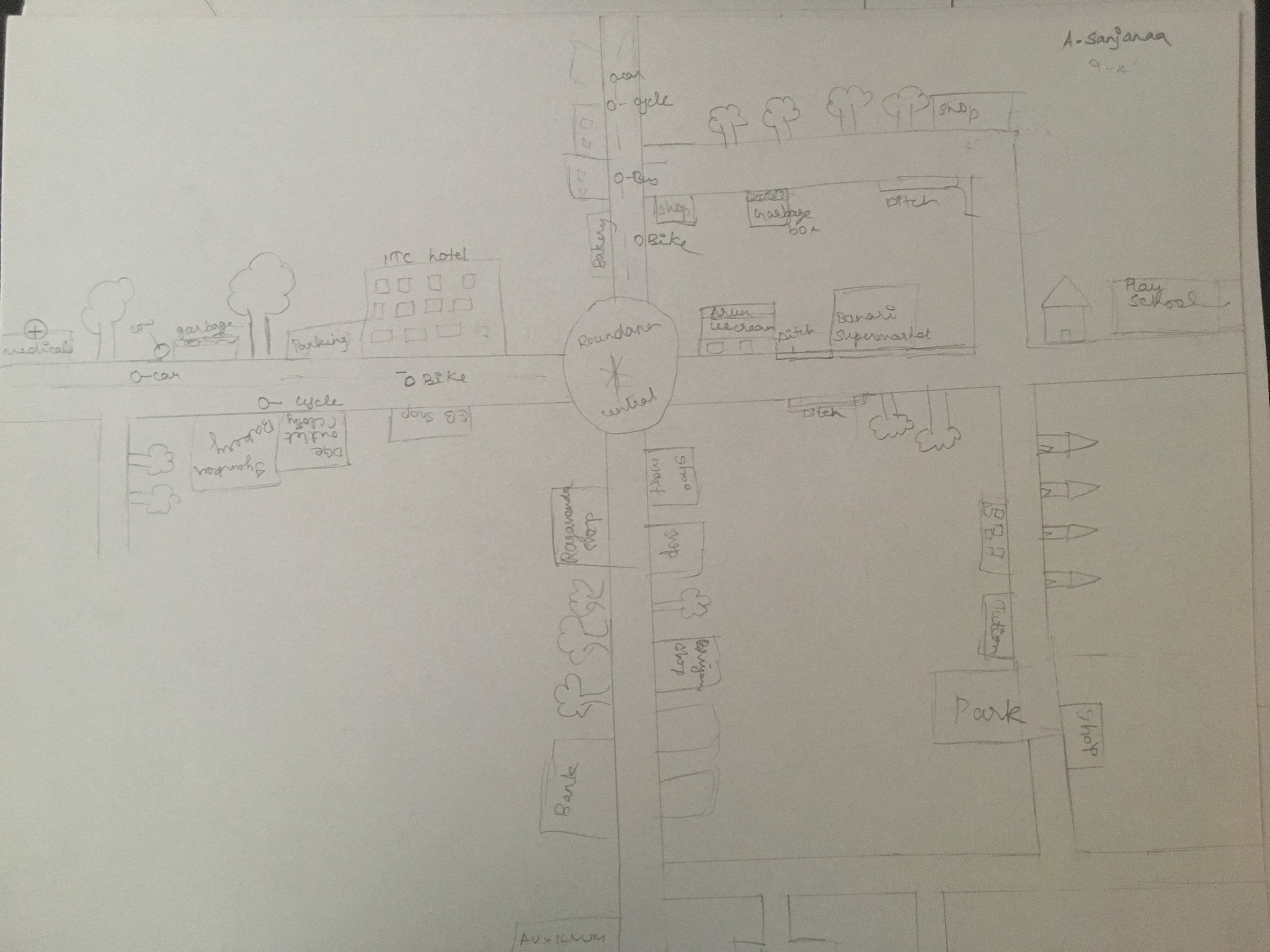
We used these drawings to discuss about what the group’s perceptions towards the neighbourhood and what they saw as issues in that area. Mentioning a few - drawing from what they had already discussed during the walk, they touched upon the need for trees and green cover in the area; the amount of garbage disposed in the streets; the need for public seating and drinking water taps/fountains; uninterrupted walkways and shaded streets for walking. The students at this point were seeing these are threats and this led to our next exercise where the participants had to reflect on their observations as opportunities for change.
Stakeholder Roleplay Game
This exercise was called the ‘Stakeholder Role play game’, where 15 students volunteered to assume roles that were given to them. The roles ranged from senior citizen, street vendors, cleaners, college students, toddlers to animals in the area. Each student had to reflect on the day’s discussion, assume the character in the role card and state what he/she needs to be changed in the neighbourhood to improve their liveability standards in that area. The other students were monitoring if the participant stuck to his/her role and also contributed to each person’s wish list.
“I am an old man and I find it difficult to walk in this traffic, I need a separate lane for pedestrians which is uninterrupted and I also want the city to work on reducing the vehicles in the area. ”- participant
There were many informed desires for change the participants made while in their role. For example, the cow wanted more urban green pastures and stronger laws against use of plastic. The participants enjoyed being a part of exercise and actively contributed to the discussion. One participant noted down the collective wish list on the chalkboard and you can see a photo of it below:
Letter to the City Officials
Towards the end of the role-play activity we initiated a conversation about how the students can communicate they desires to the concerned authorities. As predicted, they expressed a feeling of helplessness when it came to voicing their wishes. At this point Vidhya and I handed out postcards to the students and told them to write down the changes they wish for the Gandhinagar neighbourhood and that we would post it to the councillor (city official in charge of the neighbourhood). A majority of the group enthusiastically penned down their ideas in the postcards and gave them to us.

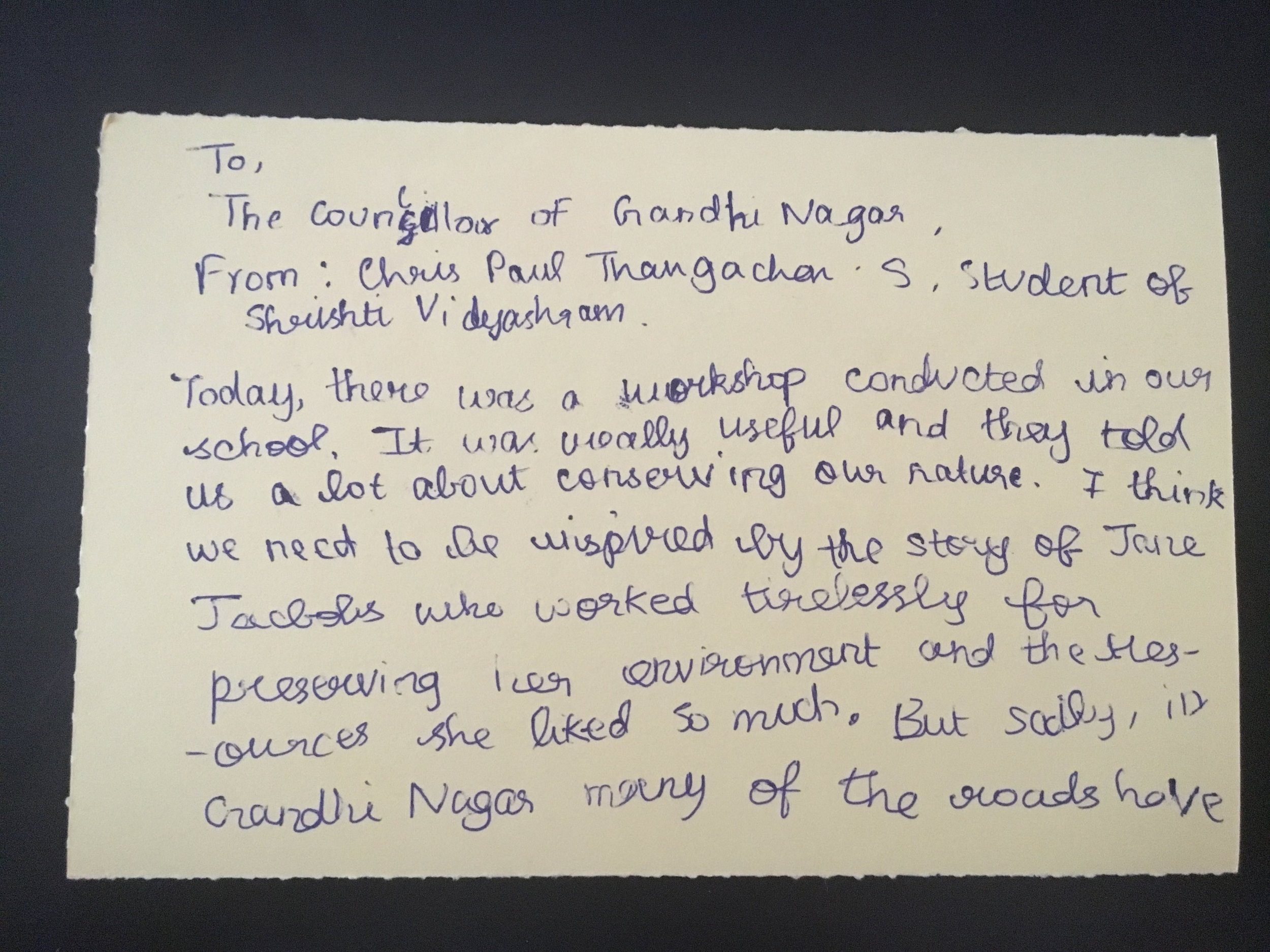
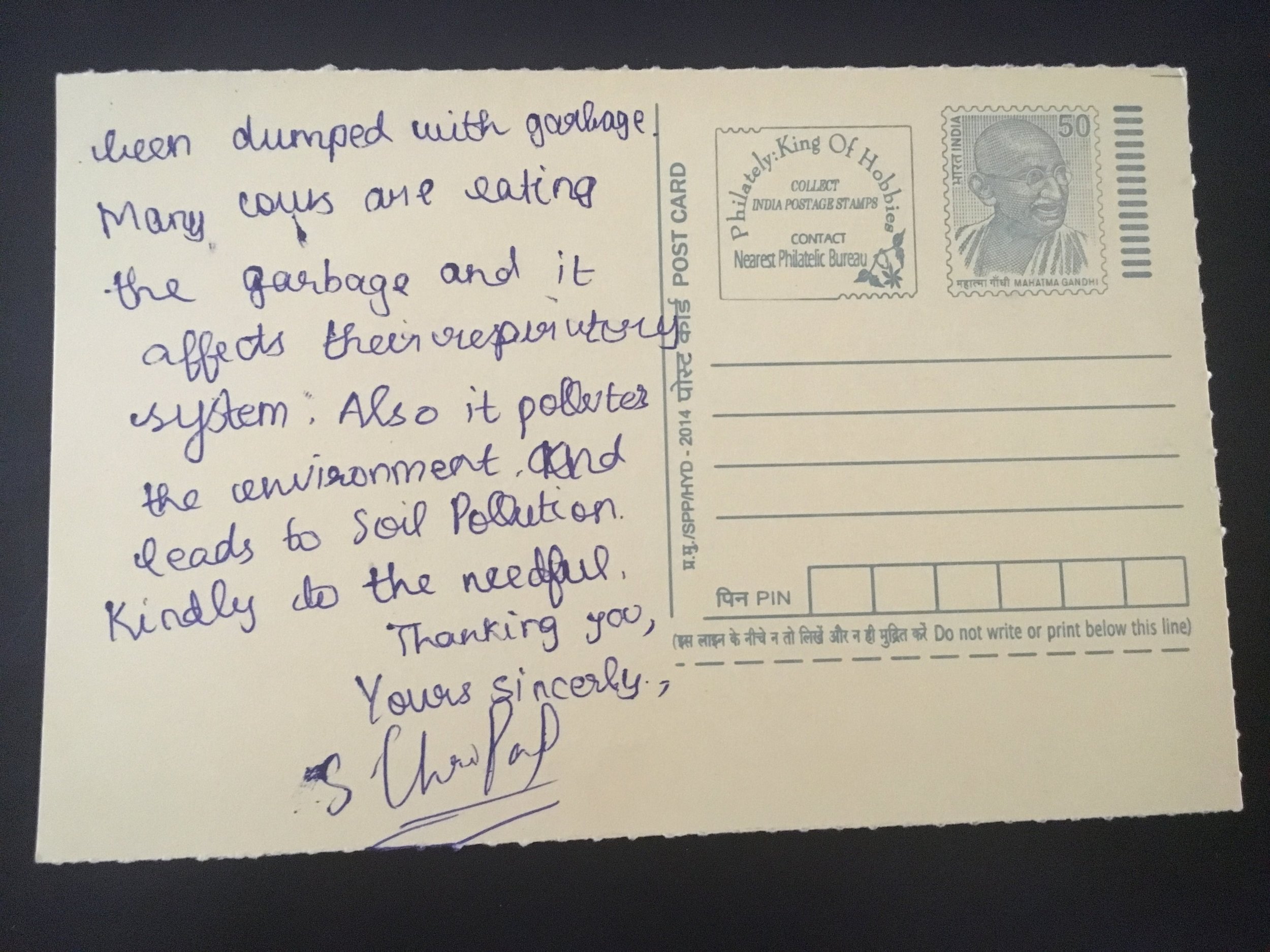
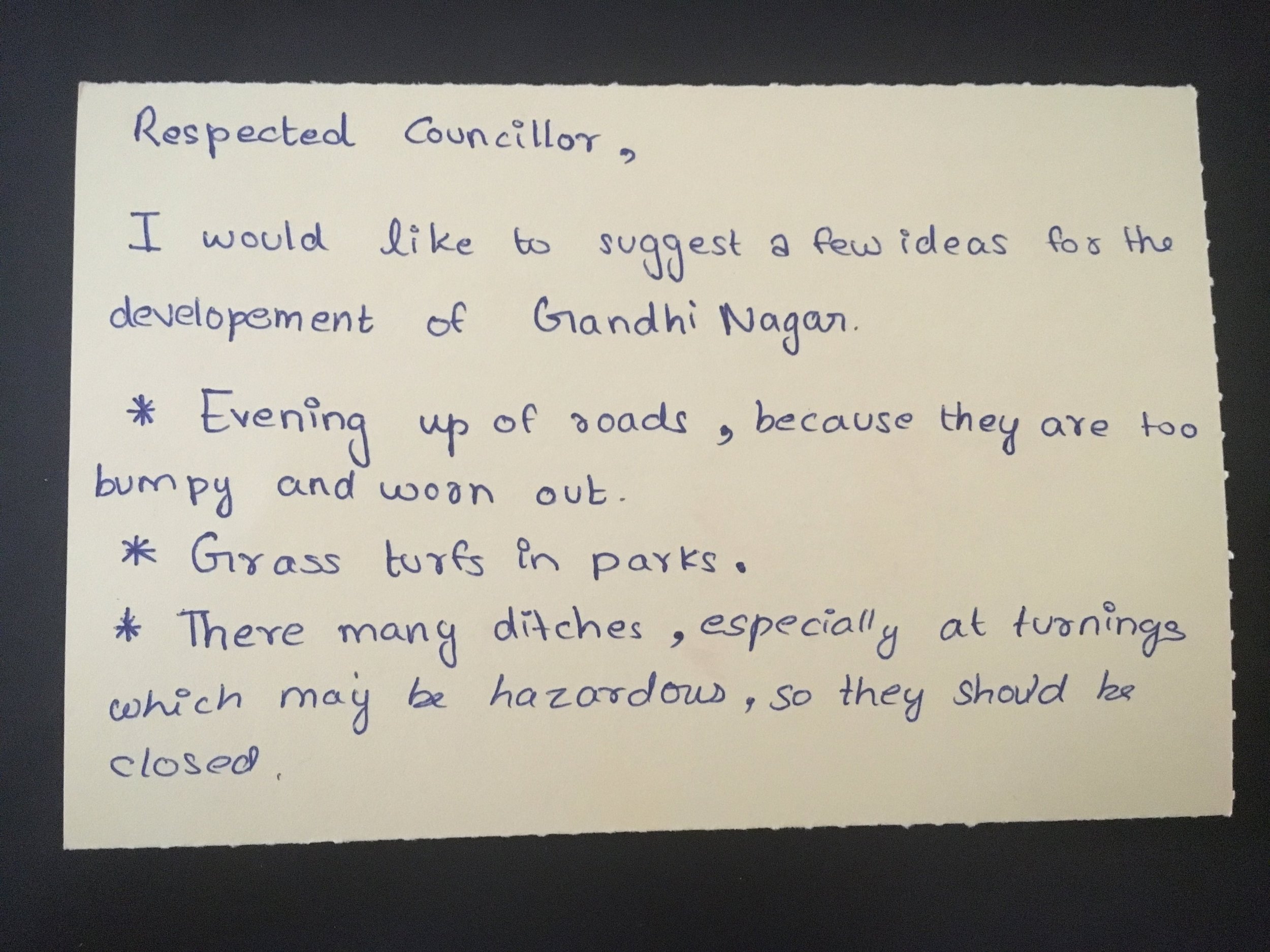
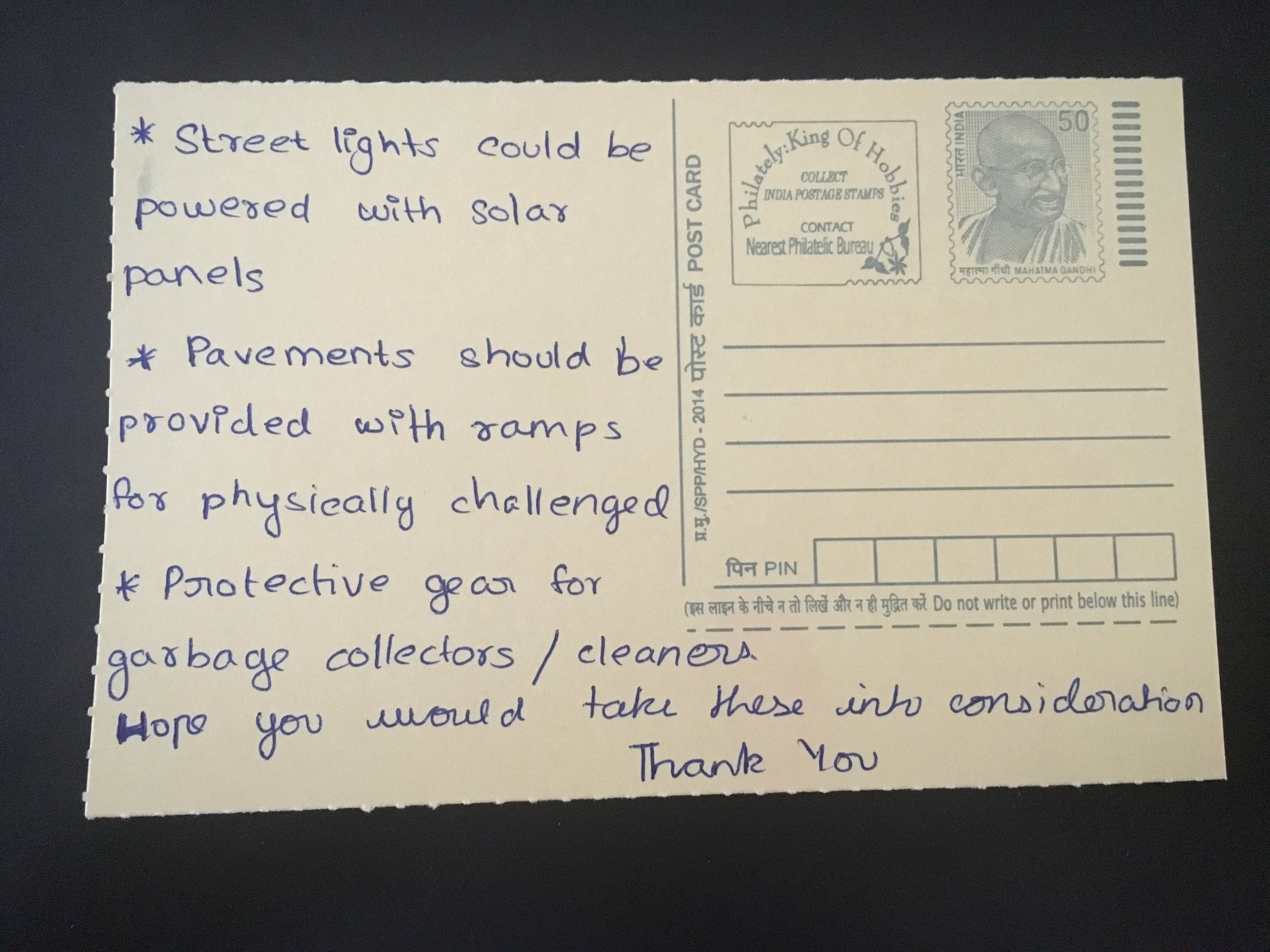


We would be posting these letters to the area councillor on behalf of the students. Click here to see all the letters written by the students.
We identified five students who would continue to be a part of the observe journey and conduct meetings with their neighbours about the learnings from this workshop.Lastly, we distributed the certificates of participation and bid adieu to the group.



